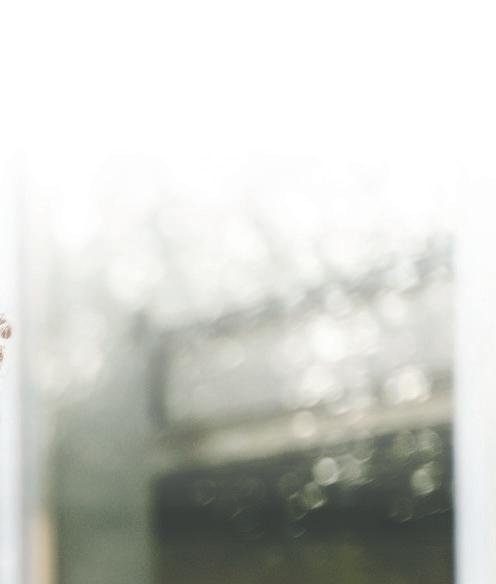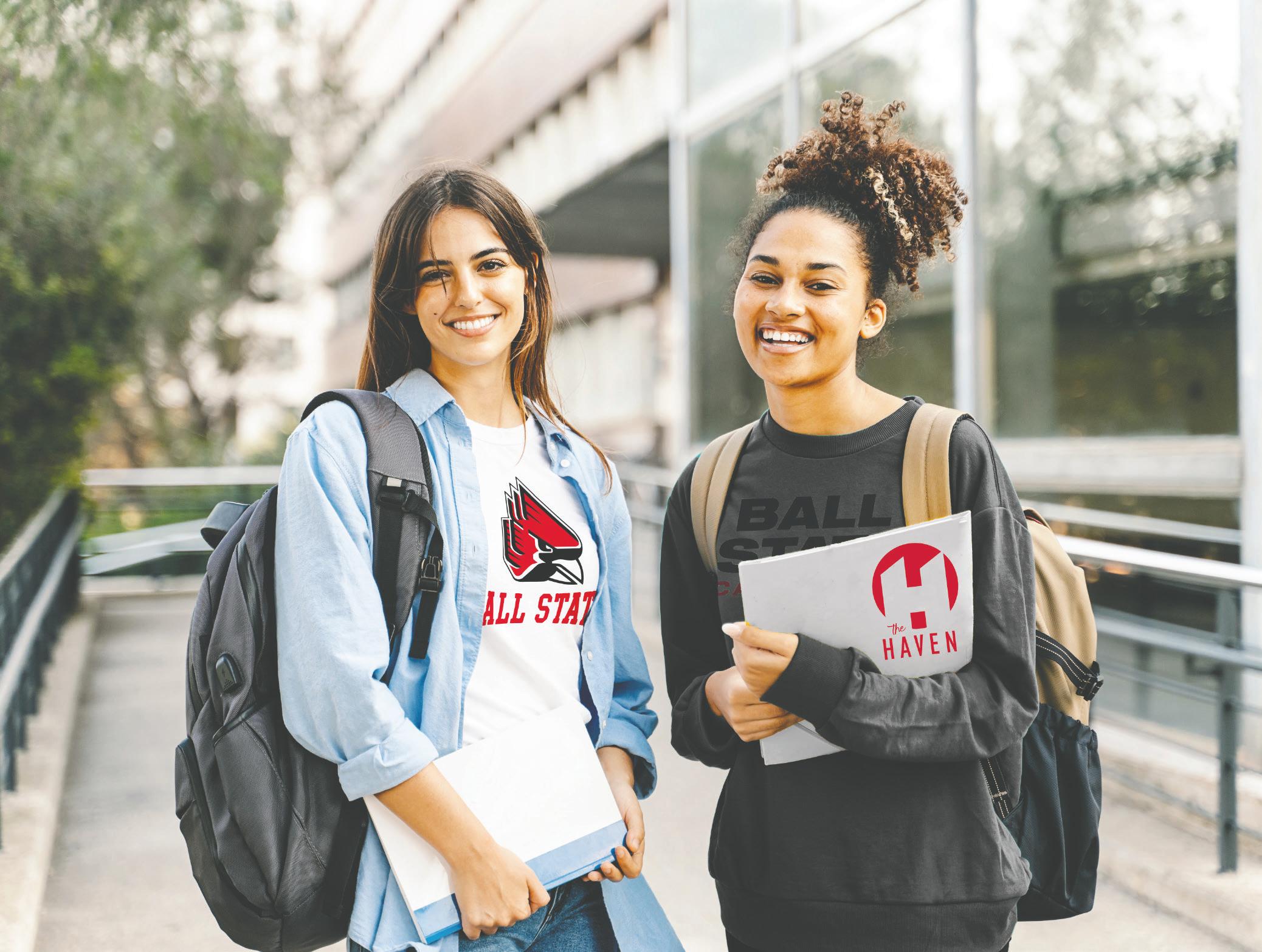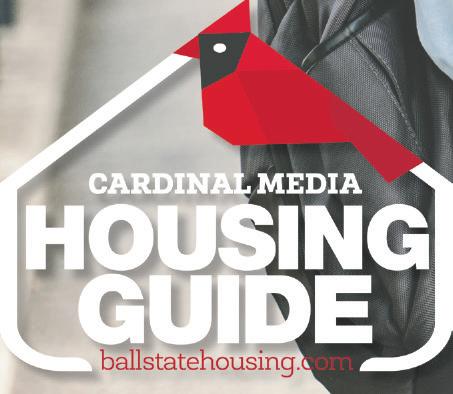










DAILY NEWS


DNNews


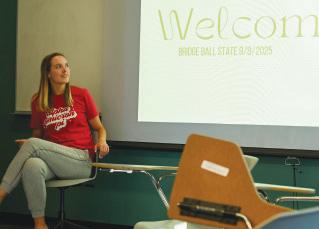
Ball State welcomes a new organization
BridgeUSA starts a new political chapter at Ball State. 03
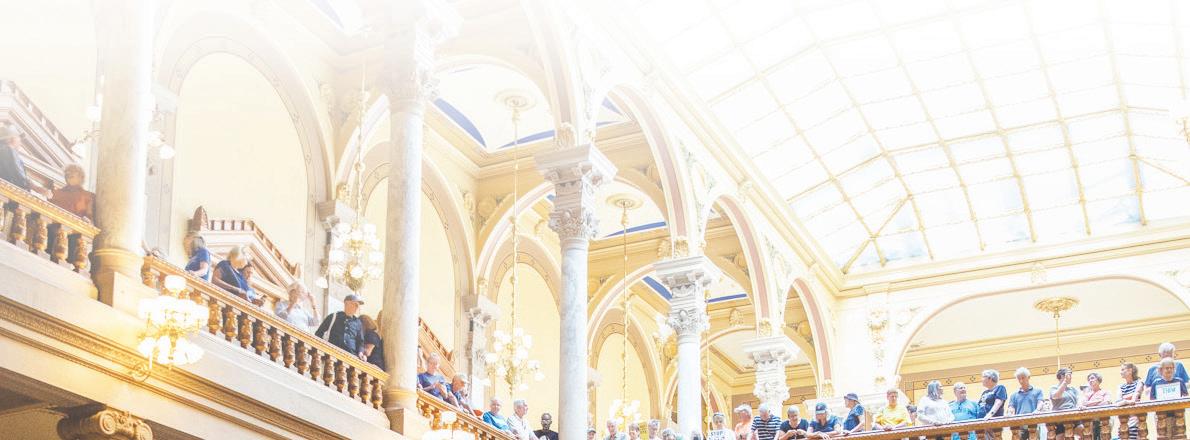
Cards Kick Cancer
Ball State specialists kick for more than just points. 06 DNSports


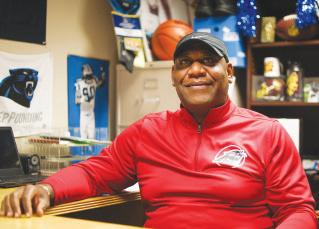


















Ball State welcomes a new organization
BridgeUSA starts a new political chapter at Ball State. 03

Cards Kick Cancer
Ball State specialists kick for more than just points. 06 DNSports




Gov. Mike Braun proposes the possibility of redrawing Indiana’s state districts early.






VOL. 105 ISSUE: 08
CONTACT THE DN
Newsroom: 765-285-8245
Editor: 765-285-8249, editor@bsudailynews.com
EDITORIAL BOARD
Meghan Braddy, Editor-in-chief
Andrew Berger, Digital Managing Editor
Shelby Anderson, News Editor
Linnea Sundquist, Associate News Editor
Kyle Stout, Sports Editor
Trinity Rea, Associate Sports Editor
Katherine Hill, Lifestyles Editor, Jayden Vaughn, Opinion Editor
Charlotte Jons, Associate Opinion Editor
Channing Matha, Copy Editor
Isabella Kemper, Multimedia Editor
Jessica Bergfors, Visual Editor
Brenden Rowan, Social Media
Editor
Corey Ohlenkamp, Adviser
The Ball State Daily News (USPS-144-360), the Ball State student newspaper, is published Thursdays during the academic year except for during semester and summer breaks. The Daily News is supported in part by an allocation from the General Fund of the university and is available free to students at various campus locations.
TO ADVERTISE
• (765) 285-8256 or dailynewsads@bsu.edu
• Hours: 8 a.m.-5 p.m. Mon-Fri. • ballstatedaily.com/advertise
TO SUBSCRIBE
Call 765-285-8134 between 9 a.m. and 3 p.m. Mon. -Fri.
Subscription rates: $45 for one year. POSTMASTER: Send address changes to Daily News, AJ278, Ball State University, Muncie, IN 47306
JOIN THE DAILY NEWS Stop by room 278 in the Art and Journalism Building. All undergraduate majors accepted and no prior experience is necessary.
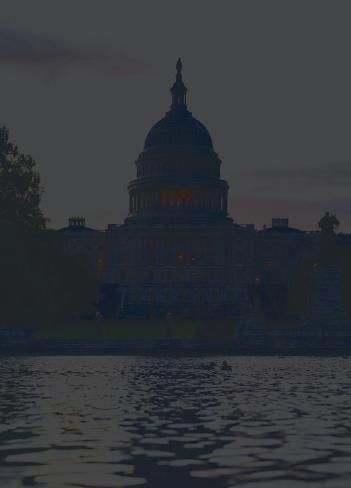
Sept. 30: On Sept. 30 Congress “blew” past the midnight funding deadline, initiating the U.S. government’s first shutdown in nearly seven years, the third shutdown of President Donald Trump, according to Tribune News Service (TNS). According to TNS, if the shutdown lasts three weeks, the unemployment rate could increase from 4.6 to 4.7 percent. Trump has suggested to his administration that they use this shutdown to conduct mass layoffs of federal workers, affecting an estimated 750,000 government employees. This move could worsen the economic consequences of the shutdown.
The Ball State Daily News is committed to providing accurate news to the community. In the event we need to correct inaccurate information, you will find that printed here.
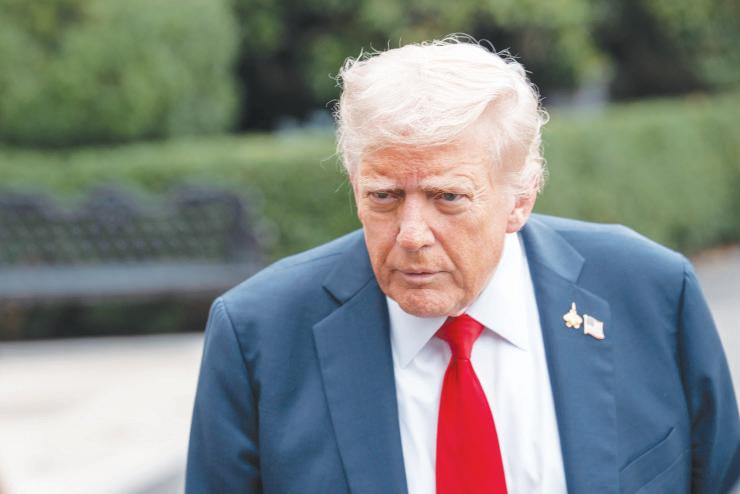
To submit a correction, email editor@bsudailynews.com.
Sept. 29: President Donald Trump announced plans to impose new tariffs to boost the domestic film and furniture industries, according to Tribune News Service (TNS). Trump posted on social media Sept. 29 that he would be “imposing substantial tariffs on any country that does not make its furniture in the United States.” He also wrote a separate post reiterating his threat to impose a 100 percent tariff “on any and all movies that are made outside of the United States.” According to TNS, companies, not countries, manufacture furniture, and the duties are charged on specific imports, not governments.

Sept. 24: Ball State men’s basketball media got underway last week, and a lot of new faces look to shine for the Cardinals. The roster for Ball State this season only features five returning players from last season’s squad, with head coach Michael Lewis primarily building his roster from incoming freshmen and the transfer portal. Despite the challenge of building a new roster, Lewis said that there is a lot to like about the newlook Cardinals. “I like the personality of this team [and] I’m still learning bits and pieces of them,” Lewis said. “They got a little chip on their shoulder, which I like.”


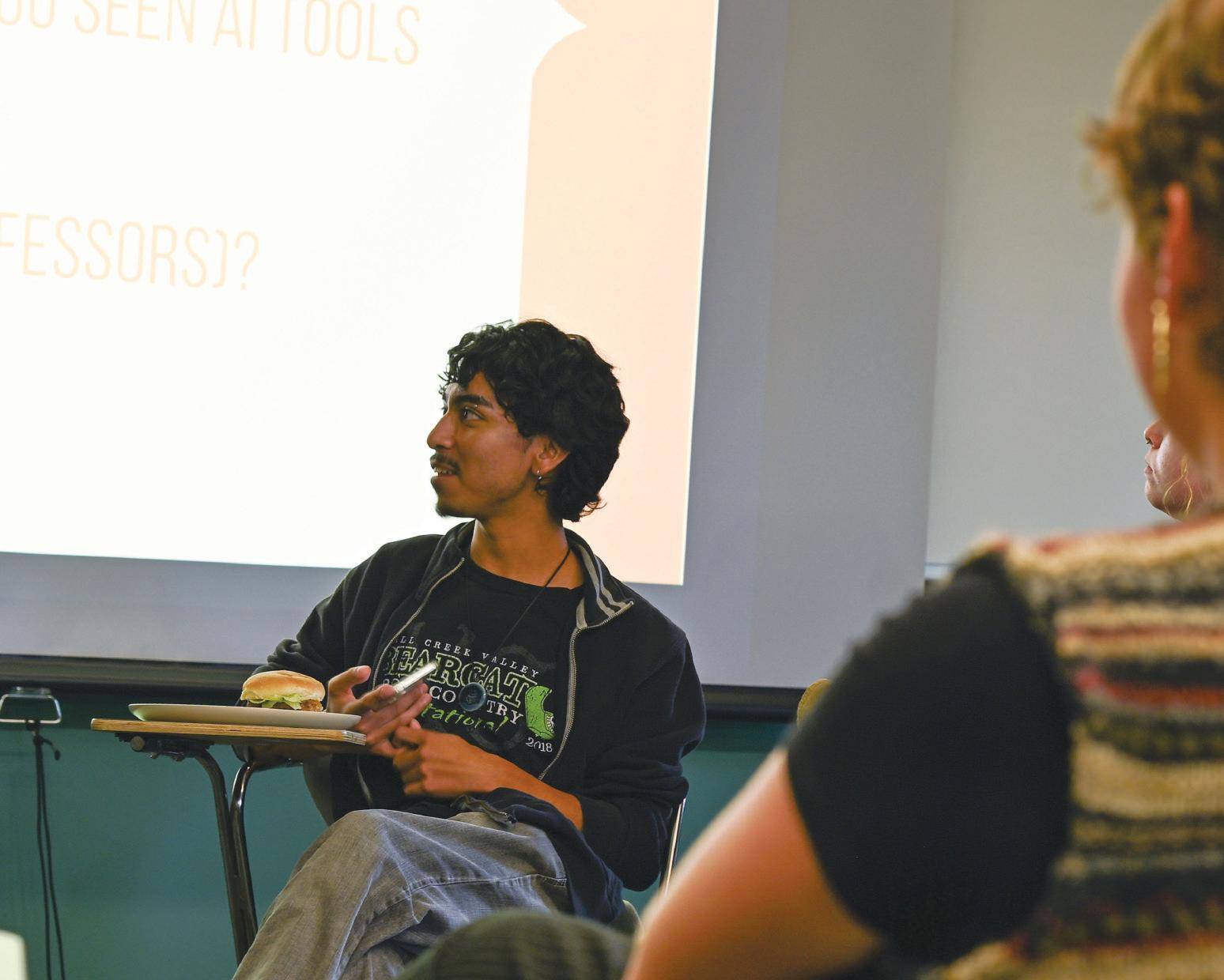
New political discourse club, Bridge at Ball State, is committed to creating a platform where students can feel heard.
Ryan Fleek Reporter
Bridge Ball State is the newest political discourse club on campus, but instead of affiliating itself with a particular ideological side, it focuses on providing a platform for all beliefs to be heard. When it comes to the effectiveness of political discussion on college campuses, there are improvements that Bridge Ball State believes could be implemented.
As a chapter of the national organization BridgeUSA, the club is dedicated to fostering nonpartisan political discourse among students at Ball State.
The club’s goal is to highlight that anyone can join and have agreeable conversations with their
peers about current topics. The lack of this polite conversation is what prompted the club’s president, fourth-year science education student Rileigh Lancaster, to reach out to the national branch about starting a chapter at Ball State.
“We are building skills to talk across distances. This club is intended for anyone who wants to come. We encourage people from all kinds of backgrounds to come and make their voices heard,” Lancaster said.
At one of their discussion meetings, the topic was the use of Artificial Intelligence (AI) in classrooms.
The conversation was moderated by Lancaster, who sat at the head of the classroom and presented the question for the group: “In what ways have you seen AI being used around campus?”
The members conferred with each other in
response to the question, each delving into their own experiences with AI and how their peers and instructors have been implementing it into their coursework.
After a few minutes, Lancaster posed the following question: “How might AI change the skills students are expected to develop?” Then, the participants continued with their experiences. This process guided the rest of the meeting as the group discussed all aspects of AI in their classroom experiences. When the discussion faded, Lancaster ignited the next round by offering a new perspective for the members to deliberate on. No one shouted or interrupted, and there was a distinct lack of distractions to steer the conversation off course. Everyone was attentive.
See BRIDGE,14
Ball State is having a workshop on Oct. 17, 2025, from 3 to 4 p.m. on Zoom, for faculty and students to understand the university’s mandated reporting requirements regarding Title IX, as well as procedures after a report is submitted. Participants can register for the event on Ball State’s communication center website.
The City of Muncie Street Department is working on a temporary paving project to improve East McGalliard Road, according to a press release from the City of Muncie Director of Communications, Amber Greene. According to the Sept. 30 press release, construction will begin in October, while reconstruction of the roadway will begin in 2027.
According to Indiana Capital Chronicle (ICC), the roles of CEO and president of Indiana’s controversial Economic Development Corp remain with Secretary of Commerce David Adams, even after lawmakers directed Gov. Mike Braun to split the two roles for two appointees. According to the Commerce Office, both of these roles are expected to change next month.
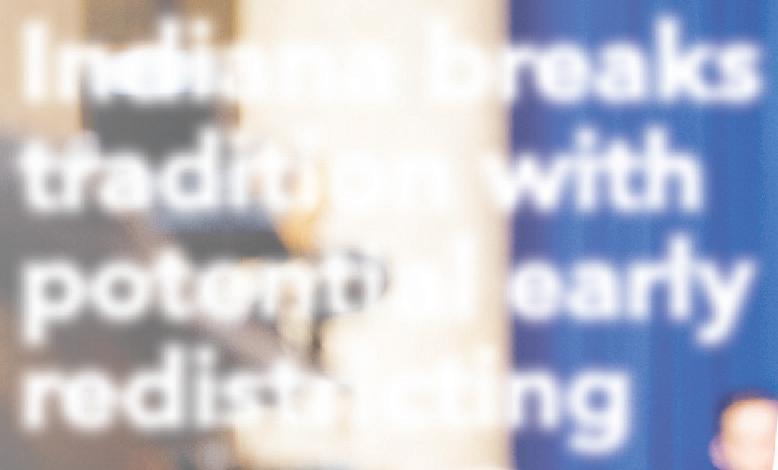

The Trump administration pushes for Indiana to redraw their state districts amid midterm elections.

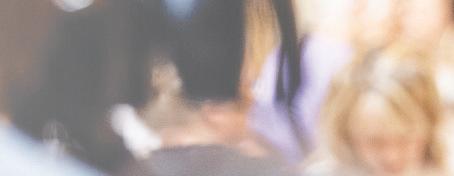
Linnea Sundquist Associate News Editor
Editor’s Note: Rep. Todd Huston and Sen. Rodric Bray did not respond by the Sept. 25 deadline.
Gov. Mike Braun suggested to Indiana lawmakers on Sept. 15 that they possibly redraw congressional boundaries in an effort to redistrict Indiana in November, according to a Sept. 16 article from Indiana Capital Chronicle (ICC).
Redistricting is the process in which states redraw their state maps, typically occurring every 10 years after the census, according to MAD Voters, an Indiana organization that, according to its Facebook, “empowers civic engagement and progressive policies for Hoosiers through education, outreach and advocacy.”
According to ICC, Braun stated that Indiana is “in the process of evolving in that direction,” after speaking on Fort Wayne’s WOWO radio about the possibility of redistricting happening earlier than expected in Indiana.
“You’re going to find that, probably, the legislators will come around to it,” he said.
Gerrymandering is the method of strategically drawing district boundaries to increase the likelihood of the future electoral success for one or more political parties, according to an Aug. 8 article from Bipartisan Policy Center. President Donald Trump is asking Indiana, as well as other states, to redraw their congressional districts to favor Republican candidates, in an effort to continue pushing for a Republican majority in the House, according to a Sept. 22 article from Mirror Indy.
Currently, the Republican Party holds a slim majority in the House, having only six more Republicans than Democrats. According to Mirror Indy, Trump’s campaign to redistrict states early may require Republicans to gain several seats to maintain their majority. Due to this, Republicans could expect to lose around 13 seats or even more, as Trump lost 42 Republican seats in his first term. Ball State Associate Professor of Political


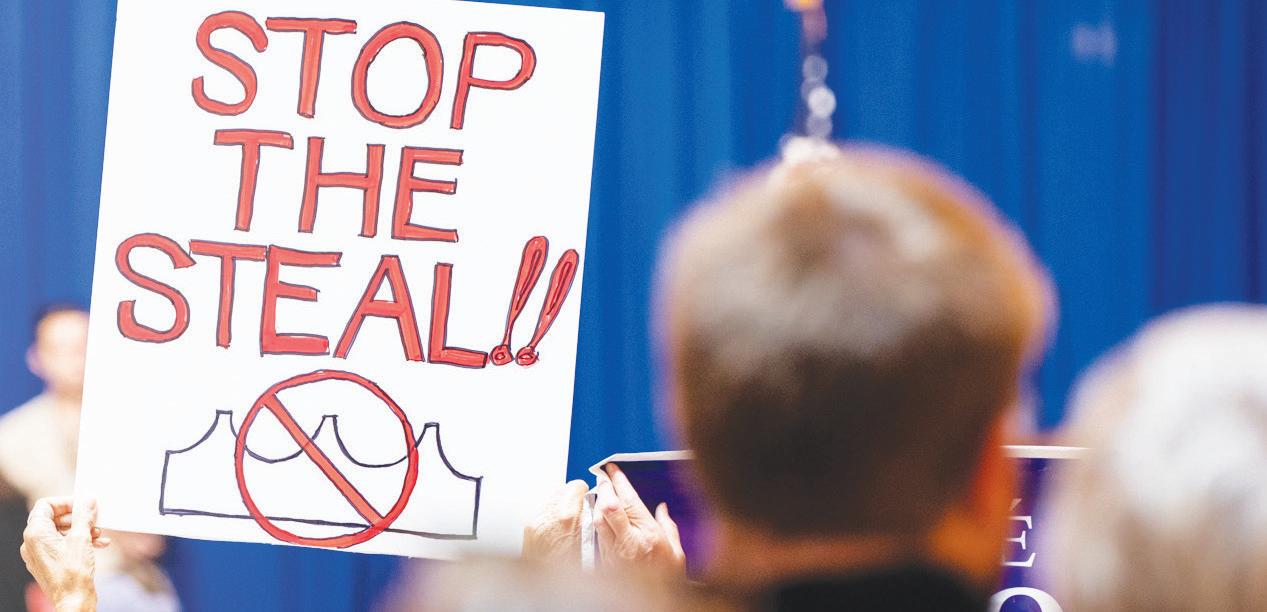
Science Sean Hildebrand said states can redraw their congressional lines however they want, as whoever is in “charge” of said state gets to make the decisions regarding the districts.
For Indiana, Hildebrand said that means the Republicans are in charge of redrawing the districts. He said the districts have to be “roughly” even in population, also having to “geographically make sense” as well.
“[District lines] can be the world’s worst jigsaw puzzle pieces,” he said.
There are no state laws that stop Indiana lawmakers from redrawing state congressional lines early, Hildebrand explained. However, other states are redrawing their state lines earlier than normal, he said, stating Florida and Texas have redrawn their congressional district lines earlier in the past.
“While [Indiana redistricting earlier] breaks tradition, it doesn’t mean it can’t be done,” Hildebrand said.
The midterm elections will take place in 2026, during which Congress, including the House and Senate, will hold their elections, marking the halfway point of Trump’s presidency.
However, the House has the chance to “swing” back into democratic control, Director of Advocacy for MAD Voters Katie Richter said, stating that the current “Republican trifecta” would be taken away at the federal level, where Republicans are controlling the House and the Senate.
If Democrats were to regain control of the House, this would restore a balance of power between the two parties. Richter explained that this would also slow down the Trump administration’s “priorities and actions,” as the administration wants to propose redrawing state districts for its own “favor.”
“So rather than play by the rules, [the Trump administration is] going to change the rules of the game halfway through the game,” Richter said.
Hildebrand explained that redistricting could potentially have no impact on Hoosiers across the
state. He says that Indiana lawmakers will focus more on the Hammond and Gary areas to increase the number of Republican candidates in those areas.
Others think the opposite.
U.S. Democrat Congressional candidate Jackson Franklin, who is running for District 5 in the 2026 midterm election, explained that redrawing congressional lines early will “hurt everyone,” stating that it would harm specific communities and impact everyone.
According to an X post provided by Fox59 News statehouse reporter Hannah Adamson, Marion County could be split into three different districts, potentially being a part of districts 6, 7 and 8. Delaware County could also possibly split into two districts, four and five, according to a map from the X post.
“[Redistricting congressional lines early] is going to overwhelmingly impact women, people of color and all working-class people,” Jackson said.
Franklin further explained that if this election is lost to the Republican Party, it will make it harder for women to vote, health care could potentially be taken away, and there will be other impacts for people who live in Indiana.
“If [Democrats] lose, people will die,” Franklin said.
Franklin said that people are “obviously” going to be mad at this decision, explaining that redistricting early is not traditional and that democratic voices will not be heard.
He said most Republican voters are “upset” about this potential decision going through and have expressed a desire for everyone to have “fair, mass and equal representation.”
He also explained how, even though the Republicans have differing beliefs from the Democrats, they still want the Democratic Party to have a chance at democracy.
Richter said that redrawing state lines early is unpopular and that the Trump administration lacks sufficient support to pass this decision.
“If [redistricting] was a popular thing, they
would have already done it,” she said.
According to the ICC, advocacy groups are urging Indiana lawmakers not to proceed with early redistricting, with 10 voting groups already delivering 9,000 signatures to the Governor’s Office. These petitions have been signed from all 92 counties, as well as every House and Senate district, according to ICC.
Contact Linnea Sundquist via linnea.sundquist@ bsu.edu.
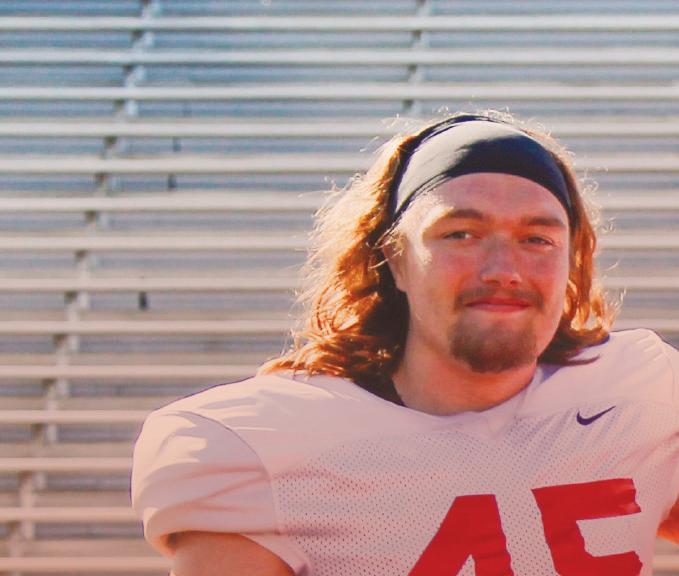
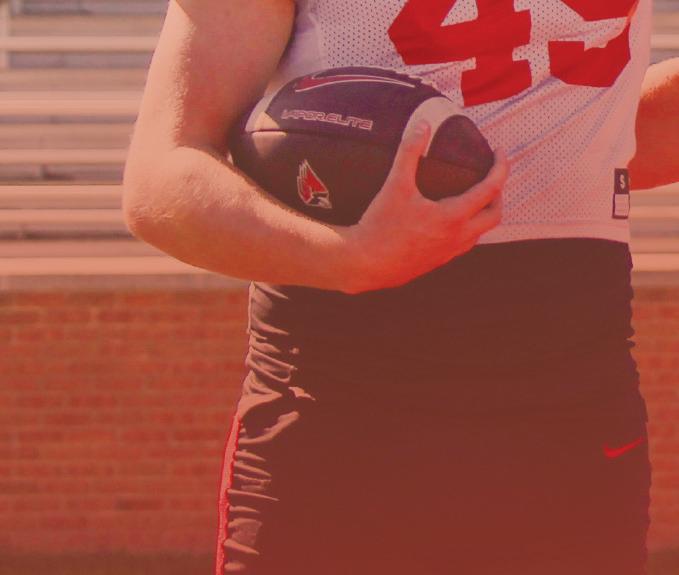
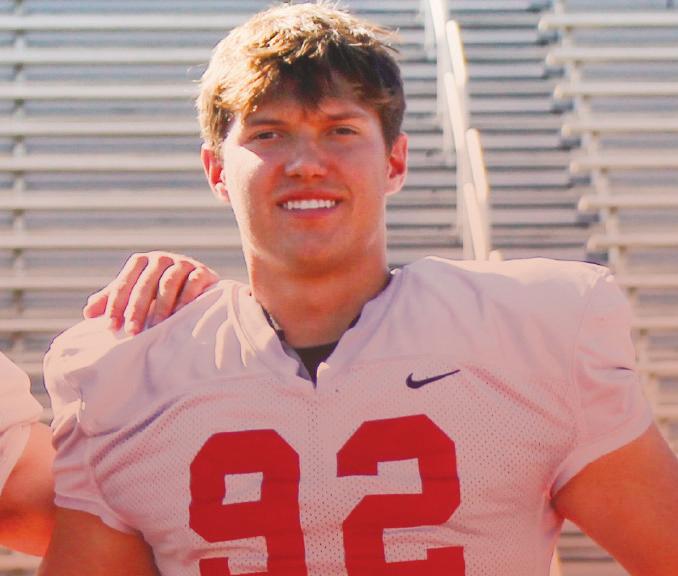
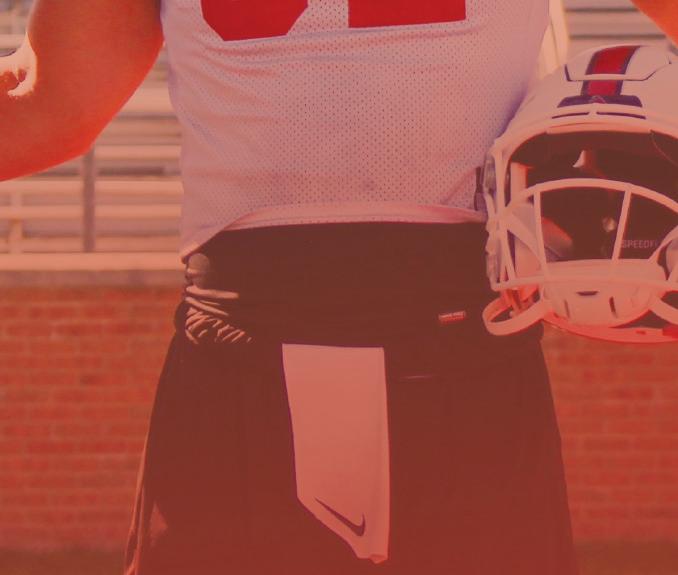
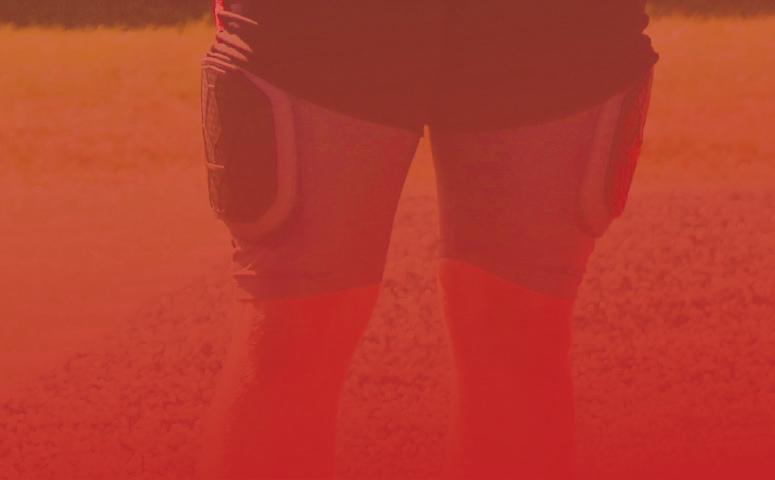

Ball State soccer Mid-American Conference (MAC) play will continue this week for the Cardinals. Ball State is coming off of a 1-2 road loss to Buffalo, in which senior forward Delaney Caldwell scored the lone goal. The Cardinals will travel to Ohio to take on the Bobcats on Oct. 2, and will round out the week’s play on Oct. 5. when they will host Western Michigan.
Both Ball State golf teams will be in Muncie next week for Golf Week’s “Put Me In Coach” individuals tournament. The tournament will be hosted at Delaware Country Club and will span from Oct. 6 to Oct. 7. The men’s team will be in Muncie for both days, while the women’s team will head to Kansas for the “Marilynn Smith Invitational.”
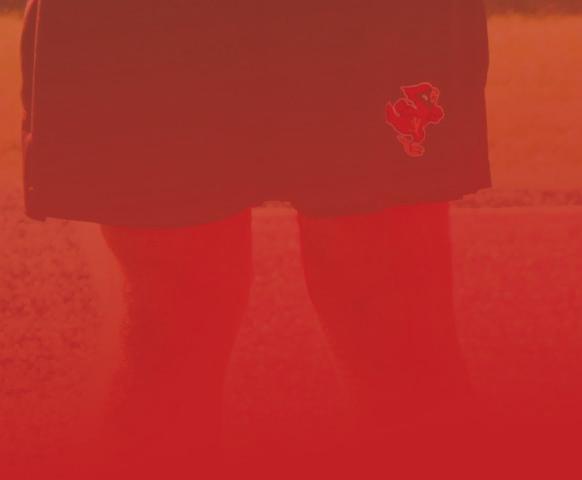
Ball State football will kick off MidAmerican Conference (MAC) play on Oct. 4. The Cardinals will host a familiar MAC foe in the Ohio Bobcats at Scheumann Stadium. Ball State is coming off of a bye week after their week four loss to UConn, and will look to begin conference play with a win. The last time Ball State defeated Ohio was in 2012.
Elijah Poe Reporter
Robert Britton remembers the dread of having to break the news nobody wants to hear to his son, Caden. But the father knew it had to be done.
“I was a mess,” he said.
He walked into Caden’s room and broke it. Caden’s little brother Behren, who was 2 and a half years old at the time, had been diagnosed with lymphoblastic leukemia.
Caden remembers the moment a “little too well.” It was a moment he would never forget.
Caden was sitting at his desk, doing homework, when his father came in. He said he already knew something was off.
But instead of Robert having to console Caden, the father said Caden was a calming force for him.
“[Caden] looked at me and said, ‘Dad, it is going to be okay,’” Robert said. “When he said that, I could see it in his eyes that he truly believed it. It calmed me down. He was upset, but in his heart, he really did believe it was going to be okay.”
That defining moment became a beacon of inspiration, as Caden started a fundraiser close to his personal story.
This season, the Ball State football specialists’ room has partnered up with a childhood cancer foundation, Alex’s Lemonade Stand, for “Cards Kick Cancer.”
Alex’s Lemonade Stand has raised over $300 million, becoming the largest independent childhood cancer charity in the U.S., according to its website.
Caden and redshirt junior placekicker Carson Holmer have teamed up to make donations to the foundation every time Ball State makes an extra point or a field goal.
Two years ago, Holmer and then punter Lucas Borrow teamed up with Hillcroft Services to provide funding for disability services. The kicker said the previous fundraiser had been a success and emphasized the importance to him that athletes use their platform to serve a greater purpose.
“It’s a good feeling that we’re able to provide something more than just entertainment,” Holmer said.
Caden said that after seeing how successful this fundraiser was, he thought it would be a great idea to start one of his own. Caden pushed the idea, and Holmer supported it. Since then, the Cardinals have been one big family in their support of the cause, with fistbumps in the hallway and constant support all along the way.
“It means a lot to me, and I know it means a lot to my family as well,” he said.
The connection to cancer has always been a close one for the Brittons. Caden’s birth mother had cancer and passed away just after he was born.
“It was just him and me for a little while,” Robert said. “...Cancer, unfortunately, has touched every aspect of our lives. But he and I have had an extremely close relationship growing together as a dad and son.”
But when cancer reared its ugly head around to affect the Britton family with Behren, he said it was almost like they had been there before. He said the family closed ranks, got closer and leaned on each other for love and support.



He is the toughest kid I have ever met. Going through something like that, looking at him now, you would never even know he had it.”
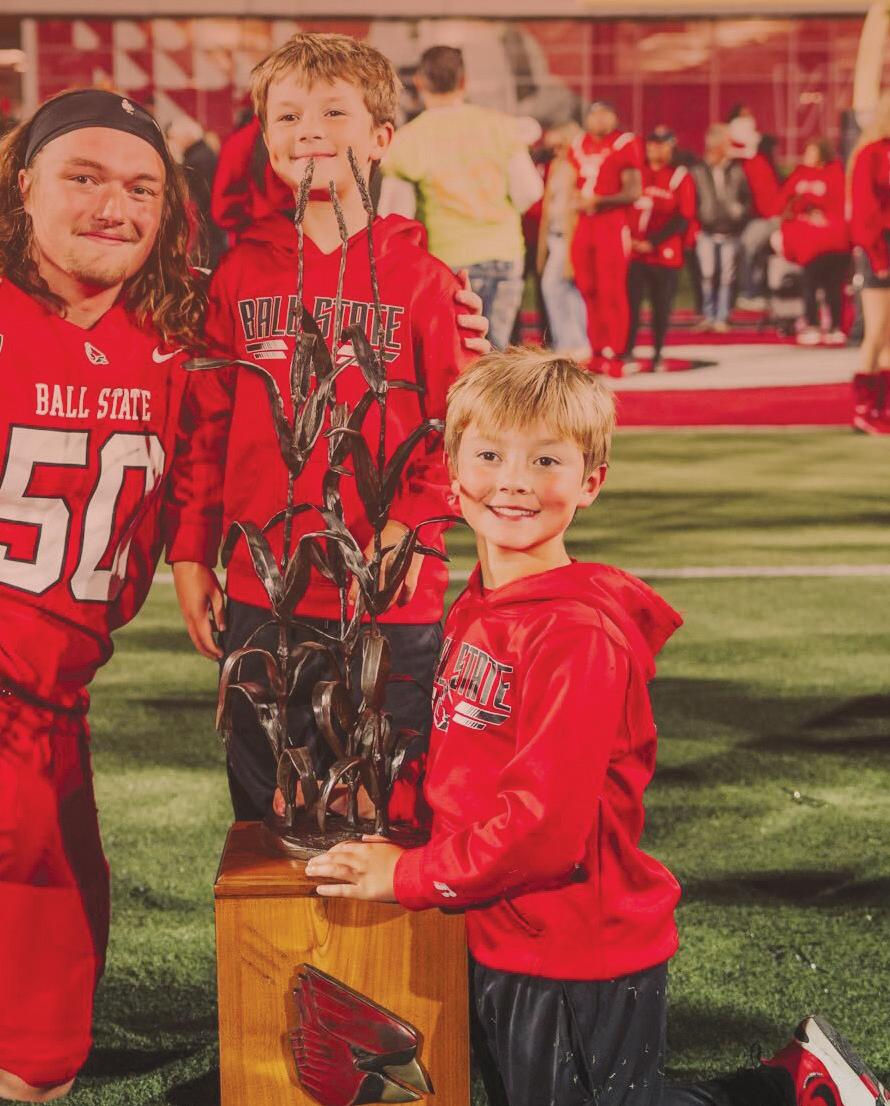
- CADEN BRITTON, BSU long snapper


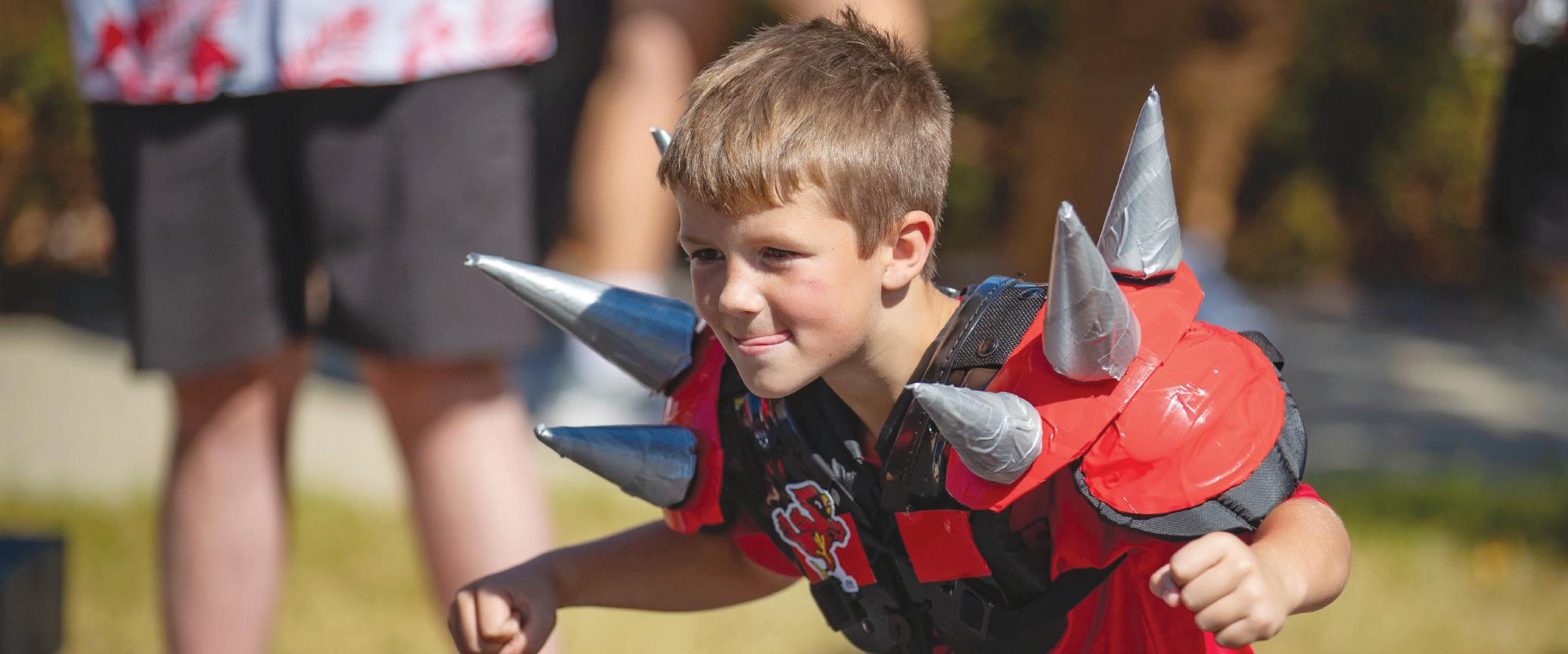
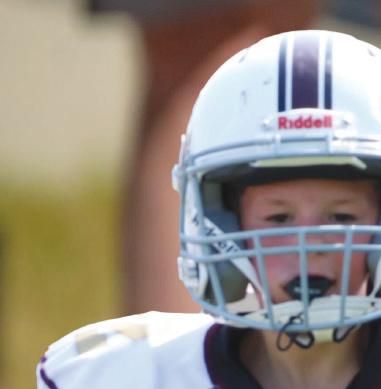
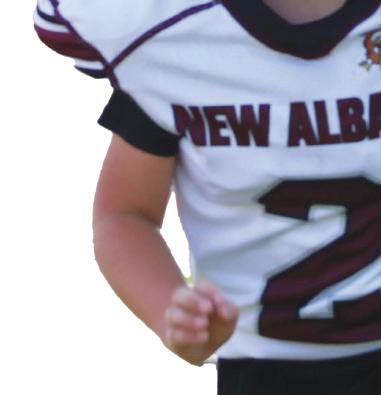


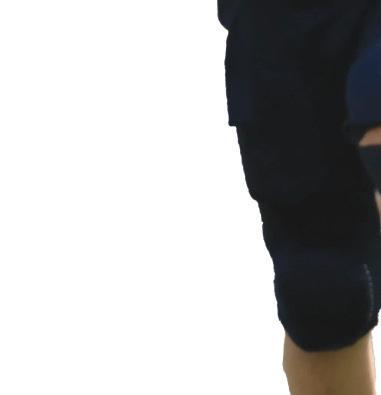
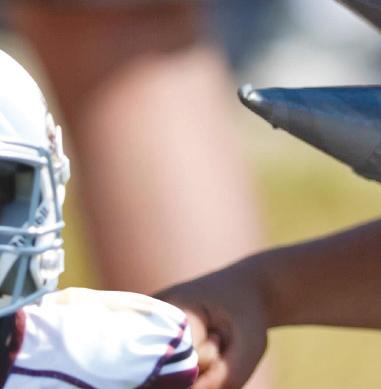
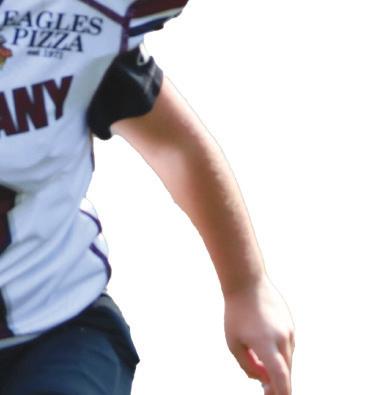
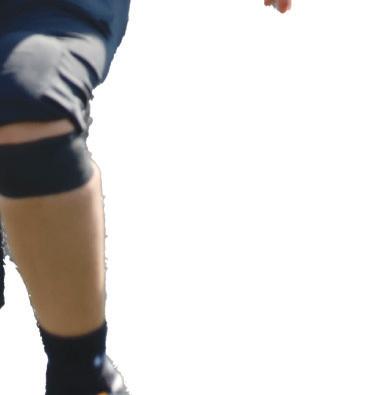
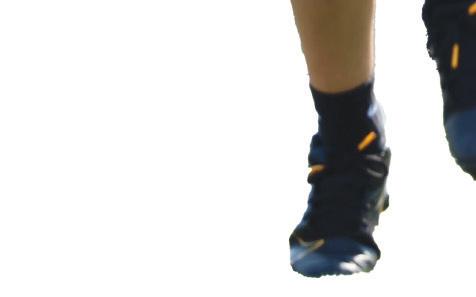
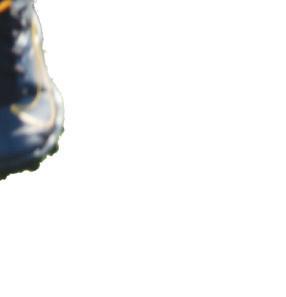
We have videos of him just singing and dancing, going through some horrible, horrible treatment. Chemotherapy is rough. Anybody who’s been through it can attest, it’s not fun.”
- ROBERT BRITTON, Father of Caden Britton
Caden saw the small and lively child in Behren start to go through chemotherapy. He lost his hair, and he had less energy — he was sick.
Robert said Behren made the best of his treatment, because it was just everyday life for the child who was growing up and living with cancer.
“We have videos of him just singing and dancing, going through some horrible, horrible treatment,” Robert said. “Chemotherapy is rough. Anybody who’s been through it can attest, it’s not fun.”
Robert said it was first devastating knowing what Behren and the family would have to overcome, but the community backed the Brittons. Robert recalls not cooking a meal for about two years.
After three years of treatment, Behren was done, which was the “weirdest thing” for Robert. The family spent three years going to the hospital for every fever, bump or anything in between. He said he cannot even count the number of transfusions and spinal taps Behren went through.
“It all just ended one day, and you have to wrap your head around living a normal life again,” Robert said.
In 2021, Behren went into remission, and just this last year, it was discovered that he was officially cancer-free.
“He is the toughest kid I have ever met,” Caden said. “Going through something like that, looking at him now, you would never even know he had it.” Behren will be 10 years old this month and is now involved in sports. He has been back to school full-time. All the things he could not do previously are now a part of his everyday life. He plays tackle football, basketball and is even interested in wrestling.
“All these things that we weren’t quite sure if we were going to get to experience with him are just a reminder of how fortunate we all are to be able to witness him do the things that he really loves to do,” Robert said.
Caden, hailing from New Albany, Ohio, just outside Columbus, received a lot of love from Ball State during his recruitment process. However, there was another major factor for him: it was close to home.
“My family is huge [for me],” he said. “I wouldn’t be where I am without them.”
Caden, having two younger brothers, said he wants to be a part of their lives as much as he can.
“It changed the way I look at life,” he said. “It changed how I approach things with them, because everything I am doing, they are watching. I want to be a good role model to them, someone they can look up to.”
Robert said every parent has the idea of a tight family, but it does not always work out that way. However, it did work that way with his family. Sure, Robert said the three argue and wrestle, but they also foster a genuine relationship.
He said from day one, Caden was always there as a brother.
Robert said not only is Caden a role model for his brothers, but he is also a role model to both his parents. The father said Caden has been an inspiration in the way he has navigated his younger years helping with Behren and is now at the collegiate level playing football and pursuing his degree at Ball State.
“It’s tremendous to see him mature in a way where not only did he experience something, but he’s willing to find an opportunity to give back and to tell his story,” Robert said.
But the big brother in Caden, who tries to be the go-to role model, said at the end of the day, Behren is a role model to him.
“I don’t know if I’d ever be able to go through that,” Caden said. “That’s something that you wouldn’t want to happen to anybody, and he came out stronger.”
Caden jokingly said Behren does not even think he plays a real position as the long snapper, but at the end of the day, he said he always knows Behren is proud of him.
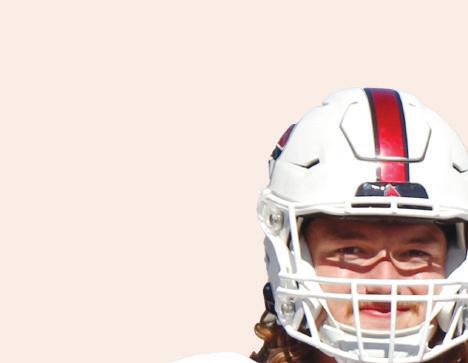
To donate to the fundraiser, visit the Cards Kick Cancer page on the Alex’s Lemonade Stand website.
Contact Elijah Poe via email at elijah.poe@bsu.edu or on X @ElijahPoe4.
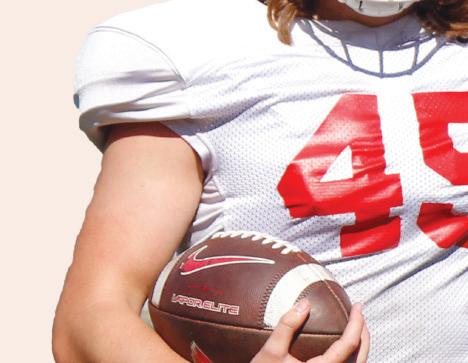
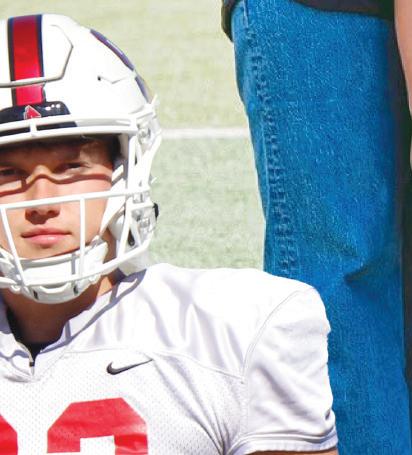













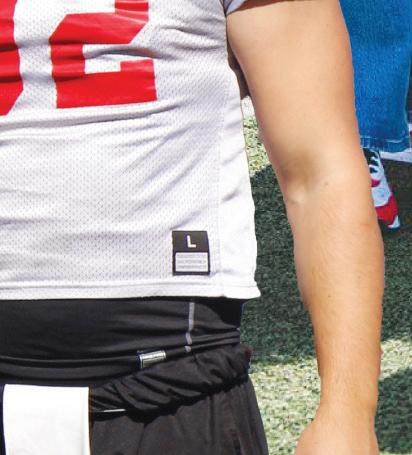

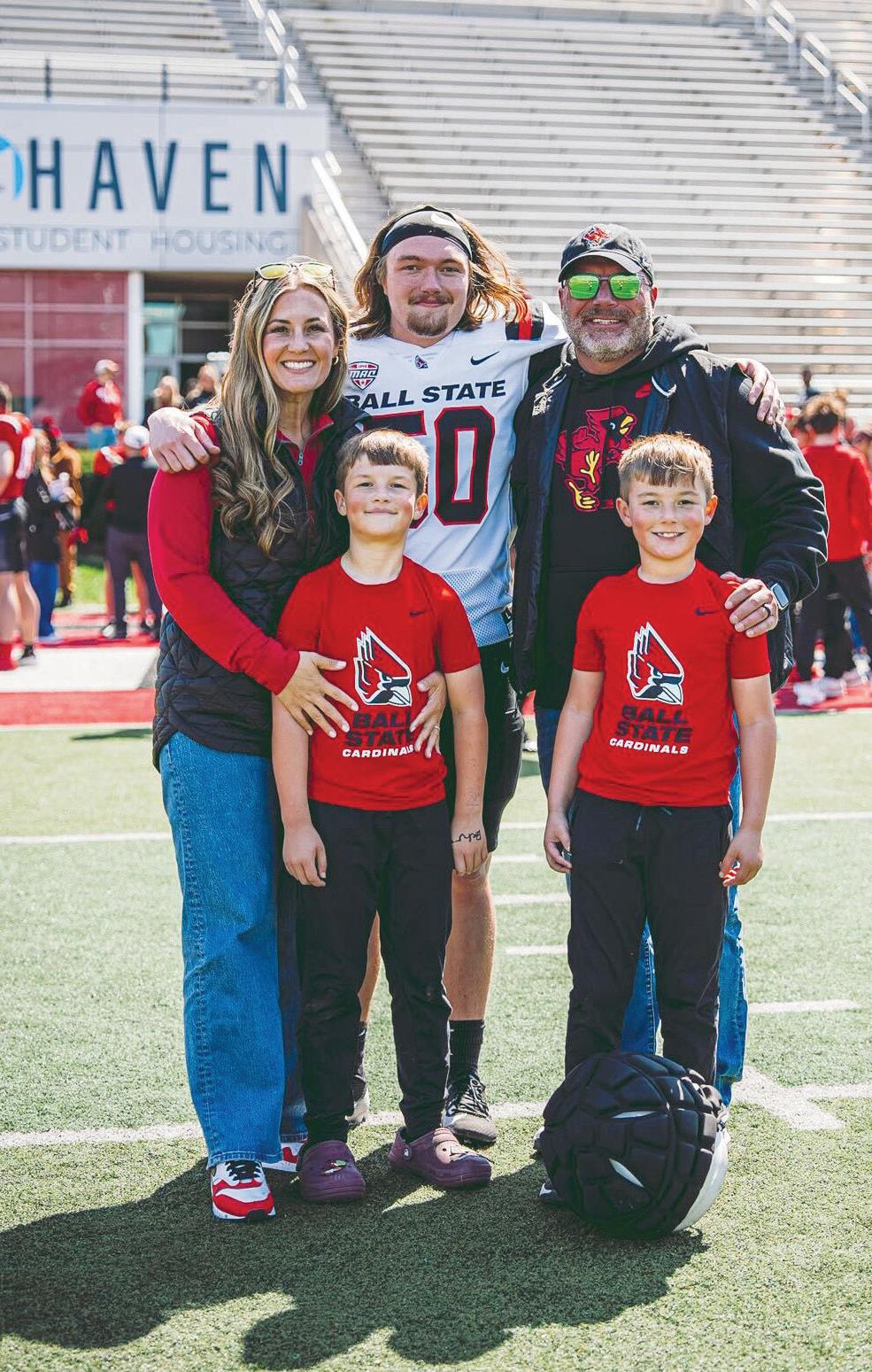









Former NFL player Brandon Hayes uses lessons of sportsmanship to guide students at Muncie’s Southside Middle School. 10
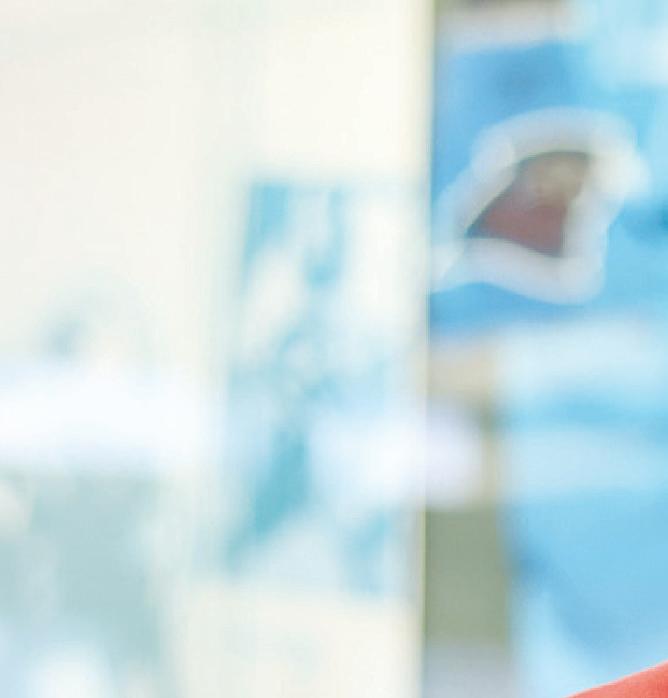
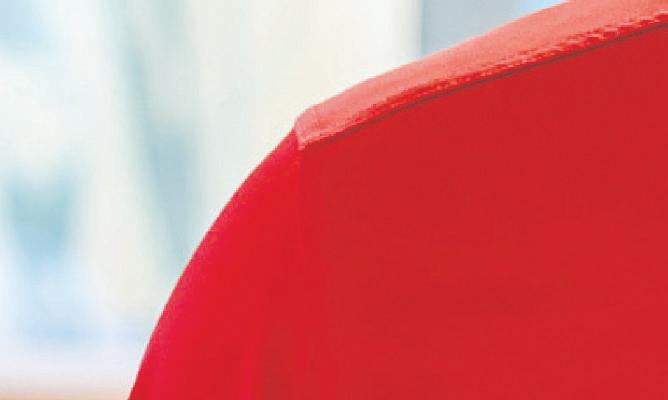

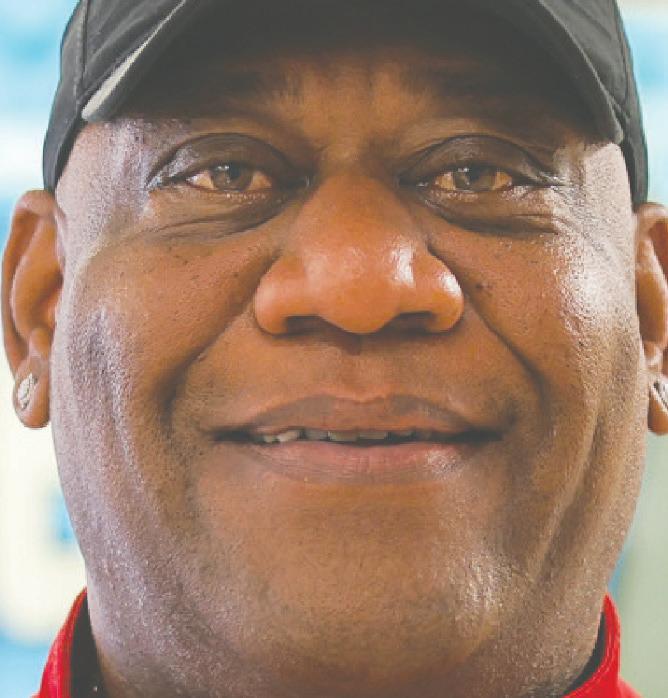
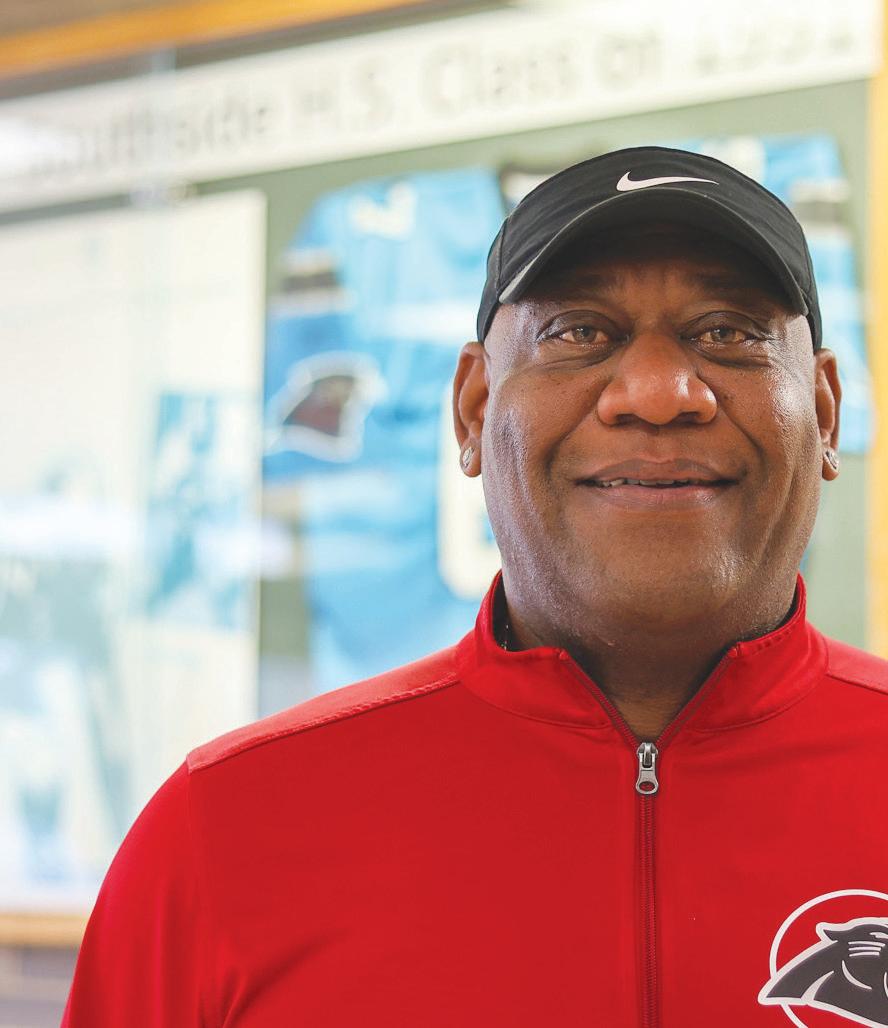


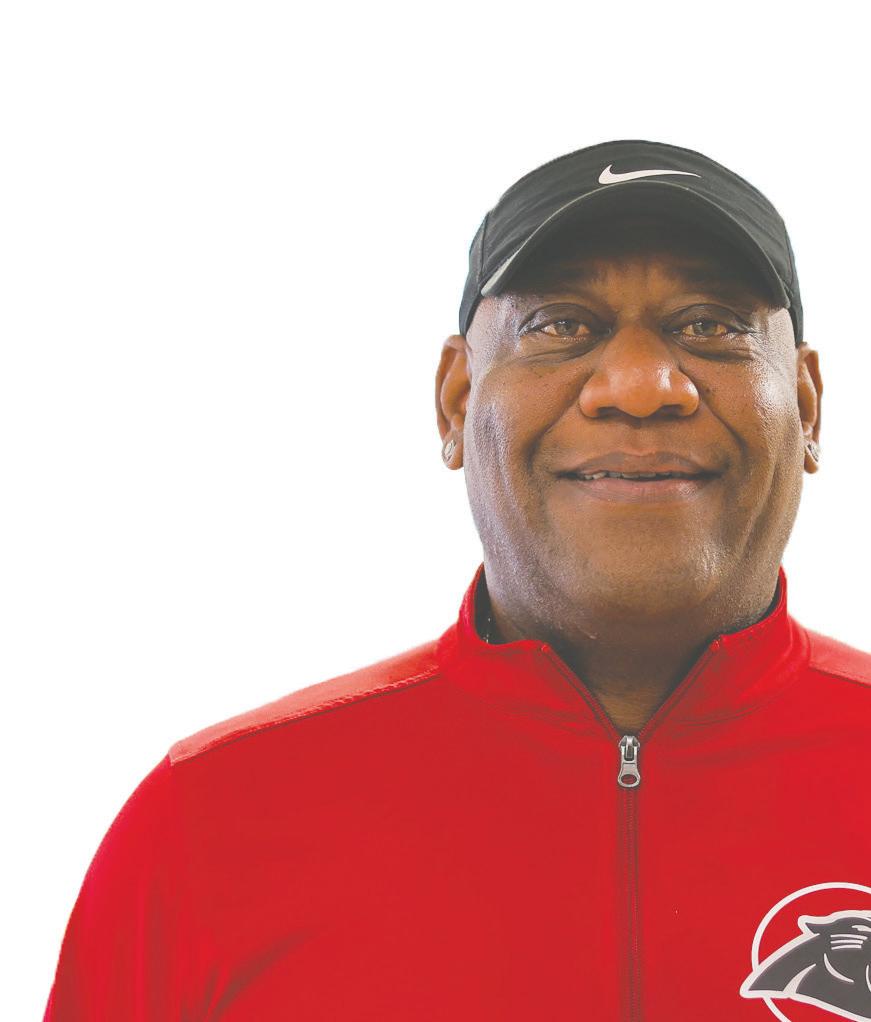

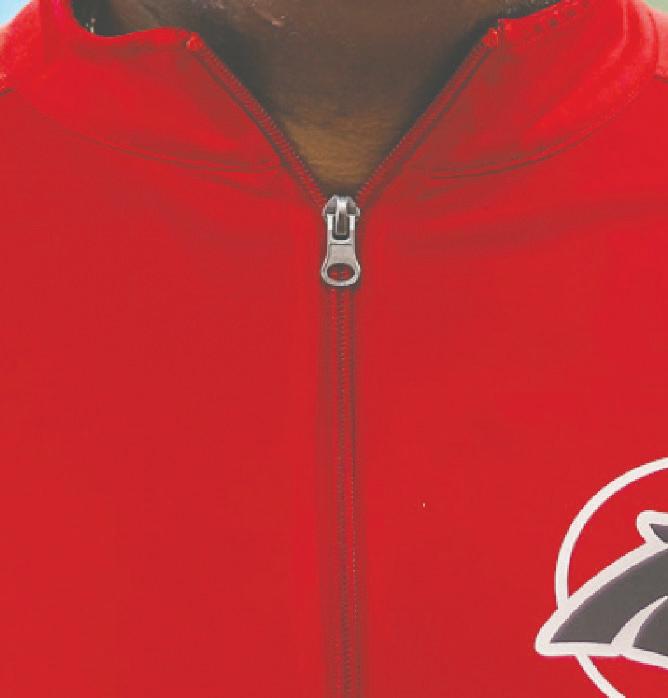
A Sept. 29 press release from Ball State Communications Center detailed three Homecoming events that are still in need of volunteers: the department decorating contest, the bed races and the homecoming parade. Ball State Homecoming is Oct. 13 - 18. To get involved, email homecoming@bsu.edu.
Ball State alumni, fans and friends are invited to celebrate their Cardinal pride before the home football game against Ohio Oct. 4, two hours before its noon kickoff outside the alumni center. Each CharlieTown tailgate will feature local food trucks and drink vendors, according to a Sept. 29 press release from Ball State Communications Center. Community
Muncie’s fifth annual Maybelle Music Fest is set for Oct. 4 from 2 to 10 p.m. at Elm Street Brewing Co., according to a Sept. 20 press release from the festival’s executive director. The free, all-ages festival features 30+ female-led acts, flowers and food vendors while celebrating the rawness and sensitivity of women in music.

Dillon Rosenlieb Reporter
Growing up on North Street, Brandon Hayes spent his free time dreaming and playing with a football under the streetlights, but that dream soared into something far more than just a game under the lights.
From a high school athlete to a stint with the Carolina Panthers and now dean of students at Munice’s Southside Middle School, sports have always been a driving force in his identity. As a kid, Hayes spent many afternoons playing football at the park, just across the street from his childhood home. His love for football carried him all the way to the National Football League (NFL). There, Hayes said the transition was difficult, but it was also where he discovered the kind of discipline, accountability and perspective that would eventually shape him as a leader.
Today, as dean of students at Southside Middle School, those same values remain at the core of everything he does.
“You have to work as a team. It’s just not about you. With my job here, I’m able to work with so many different people, because I was on teams, and I had teammates who I had to work with to accomplish a common goal,” Hayes said.
To him, football not only paved the way toward a free education — it also opened the door to once-ina-lifetime experiences, like standing on the White House lawn in the 90’s shaking former President Bill Clinton’s hand after winning a national title with Central State, a historically Black college in Wilberforce, Ohio.
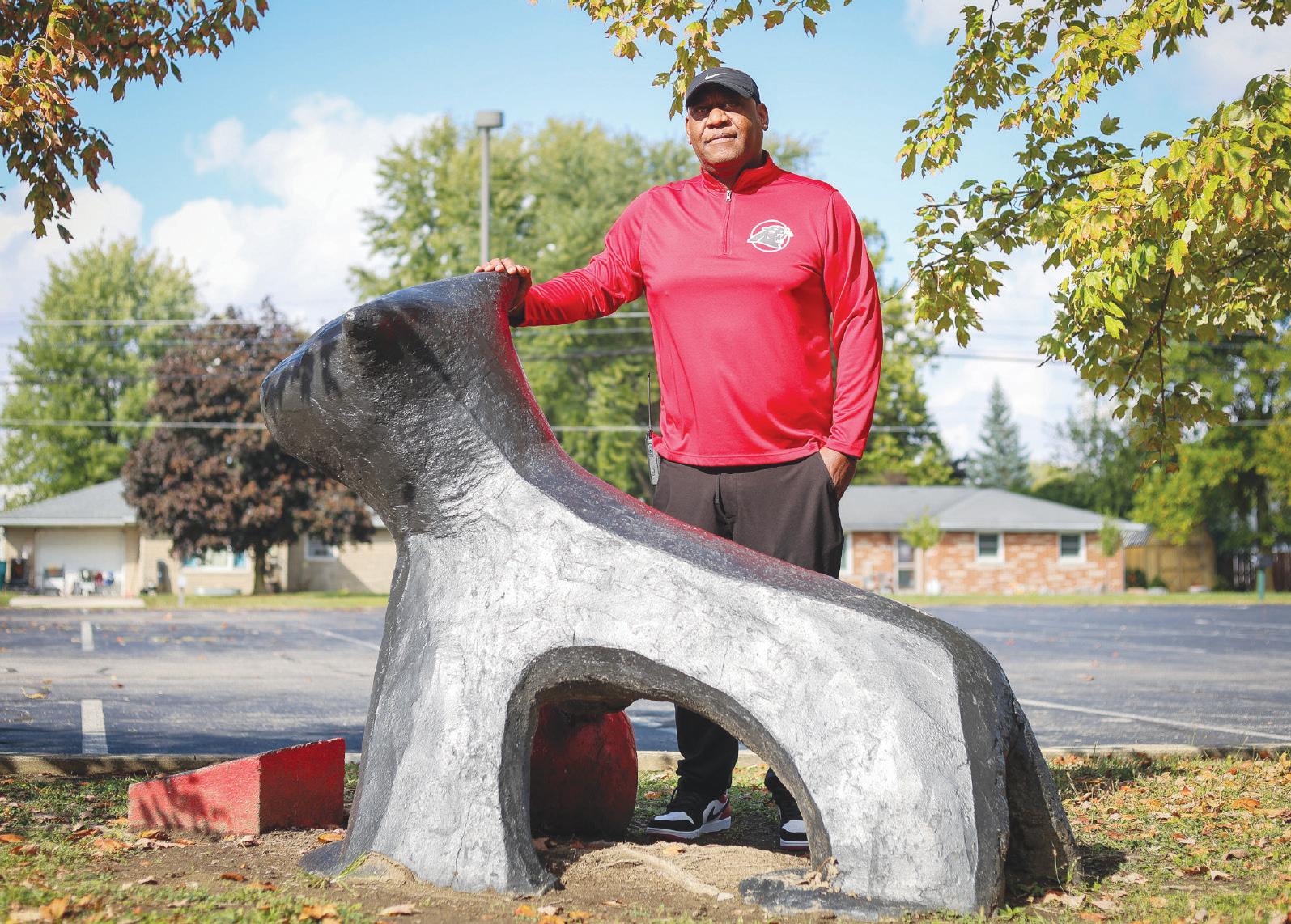
However, when his mother unexpectedly passed away, Hayes returned home to the Southside of Muncie. Now, he leans on the same mantra that carried him through the game — giving back to the place that first allowed him to dream.
“It’s been huge. A lot of people contributed to me being successful, so since I’m back here, I feel like I need to do the same thing for the kids [in Muncie] now,” Hayes said.
Youth sports were at the center of making Hayes’ dream a reality, having spent many afternoons at the Muncie Boys and Girls Club. Today, he gives back to young athletes through a nonprofit called Third and 11, which provides opportunities for kids to participate in camps and combines at Ball State University’s practice facility, according to its website.
bigger: a love of family, a love of the game and a commitment to the team and community.
Dreams Through Sports Dreaming through sports isn’t just a Southside story — it’s one shared by children all over Indiana. More than 60 percent of Hoosier youth between the ages of 6 and 17 participate in organized sports, with especially strong participation among Hispanic youth and boys, according to the Indiana Youth Institute.
You have to work as a team. It’s just not about you. With my job here, I’m able to work with so many different people, because I was on teams, and I had teammates that I had to work with to accomplish a common goal.”
- BRANDON HAYES, Dean of Students at Southside Middle School and former NFL player
“With my nonprofit, Third and 11, the key is to never give up, to keep striving to be better. Don’t let obstacles stand in your way; either go over them, get around them, [or] go under them — but keep your eye on the prize,” Hayes said.
Hayes started out as a kid on the Southside with a simple dream — to make his mother proud. Over time, that goal evolved into something
But beyond the scoreboard, the benefits run deep: The President’s Council on Sports, Fitness & Nutrition linked sports to lower anxiety, higher self-esteem and better academic outcomes.
Other organizations, like the Child Mind Institute and the UPSWING Foundation, highlight how team sports build mental health, resilience and belonging.
For at-risk youth, these programs are more than just after-school activities — they’re lifelines. Structured sports opportunities can reduce dropout rates, drug use and juvenile crime, especially between 3 and 7 p.m., when risk is highest, according to the National Recreation and Park Association.
Third and 11 partners with local organizations to
extend their athletes’ involvement beyond the field, helping participants grow through meaningful community engagement.
One of its standout collaborations is with the Muncie branch of the National Association for the Advancement of Colored People [NAACP], where chapter president George Foley Jr. has worked closely with the nonprofit to create outreach opportunities and promote leadership development.
“[Brandon and I] got together because we started a program called the Muncie Youth Empowerment Program. We wanted to partner to do some youth leadership, financial literacy and college prep,” Foley said.
As a result of the partnership between Third and 11 and the Muncie NAACP, Foley said a group of 15 kids from the Muncie area was given the chance to experience something much bigger than football. They boarded a bus and hit the road — not just to tour a few college campuses, but to envision what was possible.
From visits across college campuses to a few pit stops that included football landmarks, the trip became a powerful moment of exposure, opportunity and inspiration. For some of the kids, Foley said it was their first time seeing a college campus in person, a rare moment to imagine life beyond the block and begin to dream a little bigger.
“We were also able to go to some football events in Ohio [and] the Hall of Fame Game in Canton, Ohio, [Hayes] helped arrange for us to take a charter bus [with] 15 youth to the event,” Foley said.
Foley emphasized the importance of starting youth involvement programs early and investing in them for long-term impact.
“We went a long time without providing adequate programming for our youth. We have to listen to the youth and find out what they need. We just can’t assume, as adults, what the youth need,” he said.
He added that he believes Muncie’s NAACP Branch partnership with Hayes’ Third and 11 is a prime example of providing outreach opportunities for youth within the community.
When it comes to sports, Foley, who has a background working with the Muncie Parks Department, believes they are one of the driving forces in getting kids involved as early as possible, as recreational activities improve one’s quality of life. In a changing and uncertain time for youth and young adults, Foley said parks remain at the heart of joy, imagination and the dreams of a future, serving as a place to escape a bad day or recuperate in the respite of nature. Hayes agrees with Foley.
“Yeah, I actually grew up on North Street, …so, my front yard was basically a park. I spent so much time at the basketball courts, playing baseball and playing football in the park, [which] had a lot to do with me being involved in athletics,” Hayes said.
Contact Dillon Rosenlieb via email at dillon. rosenlieb@bsu.edu.d
Kids from the NAACP’s youth council go on a trip to HBCU college fair and HBCU Football game Aug. 2021 in Columbus,

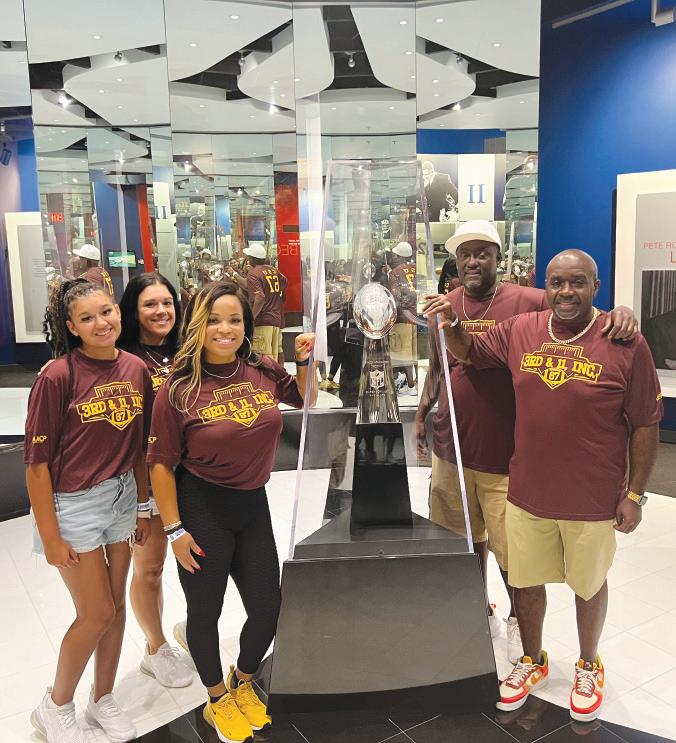


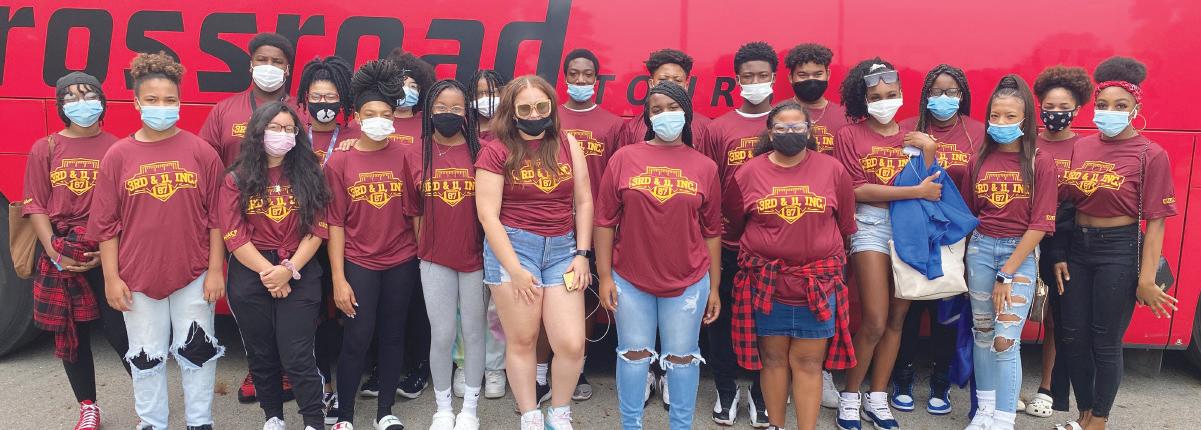

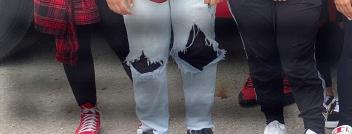
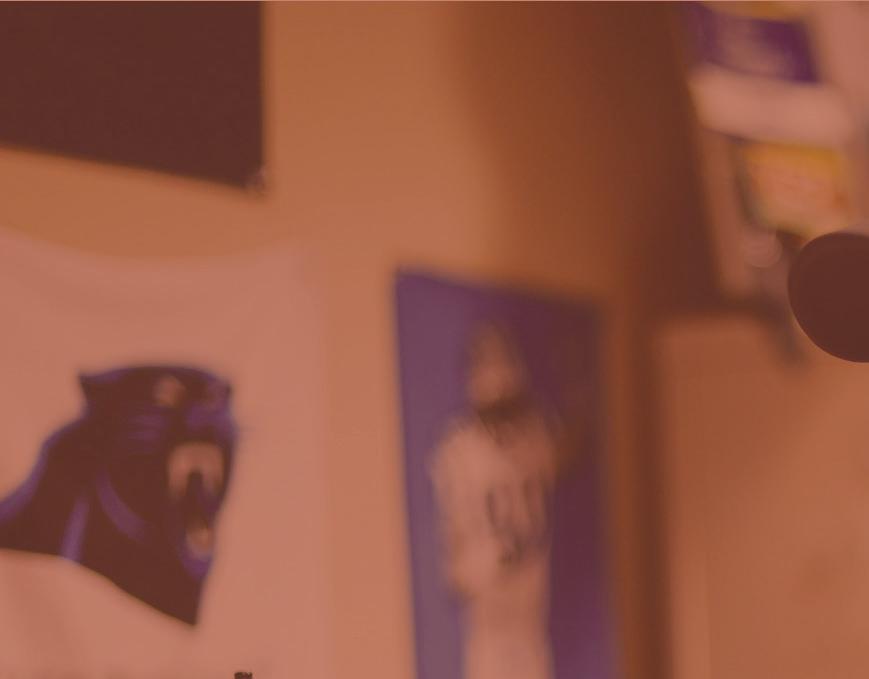
A lot

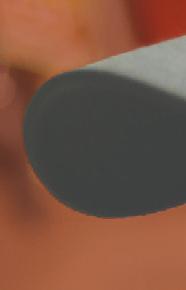


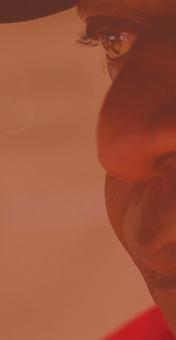
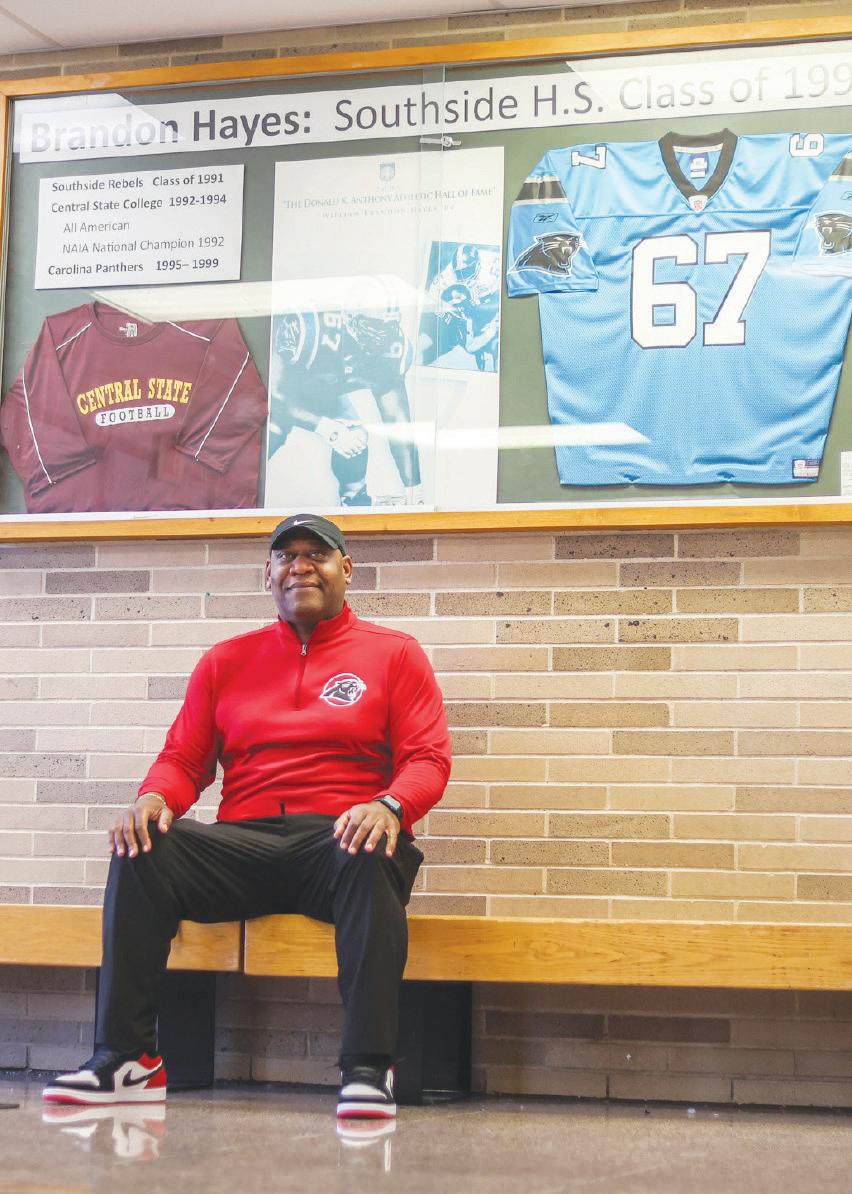

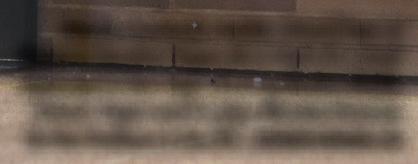
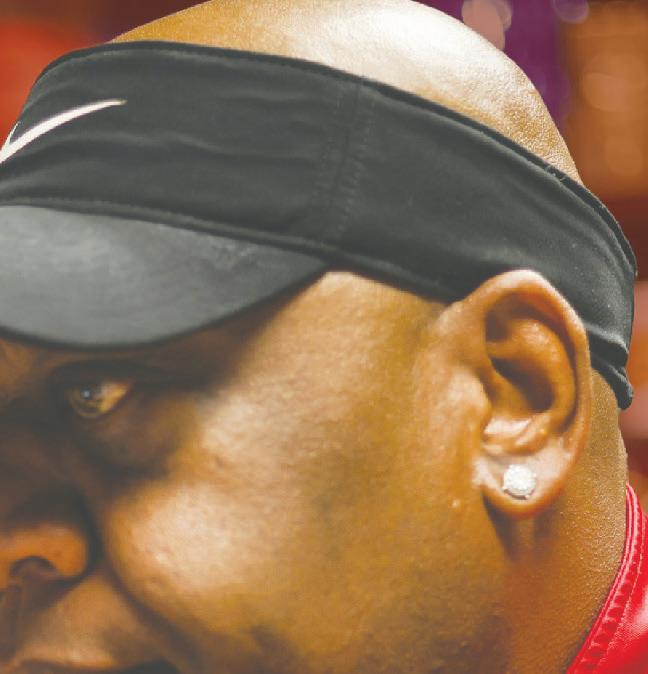


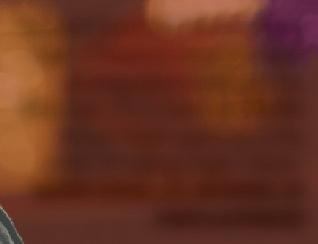
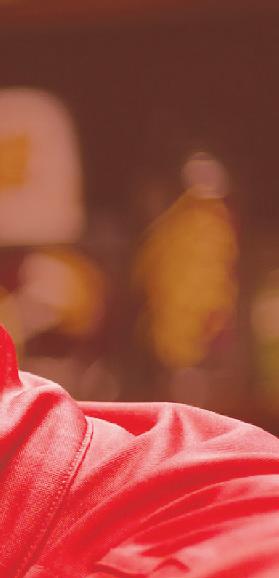
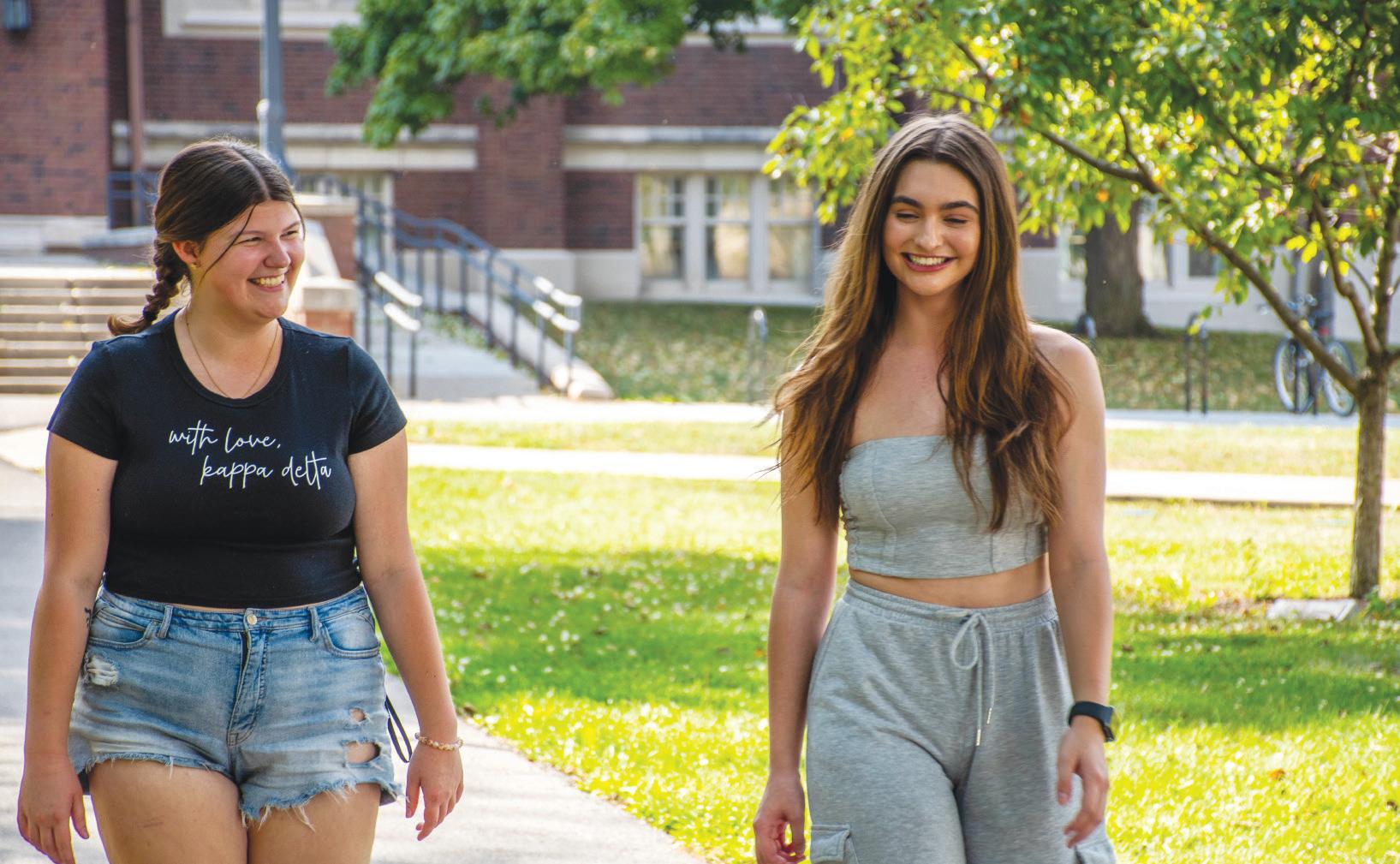
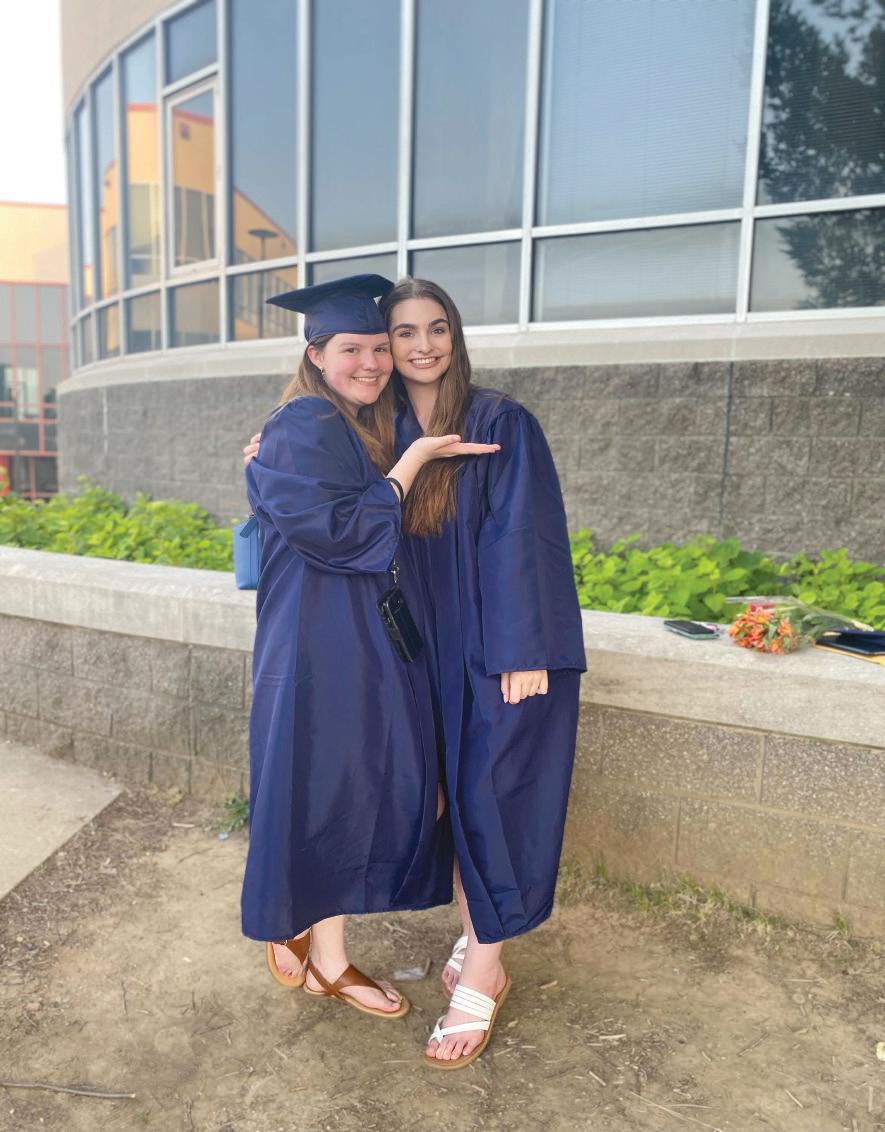

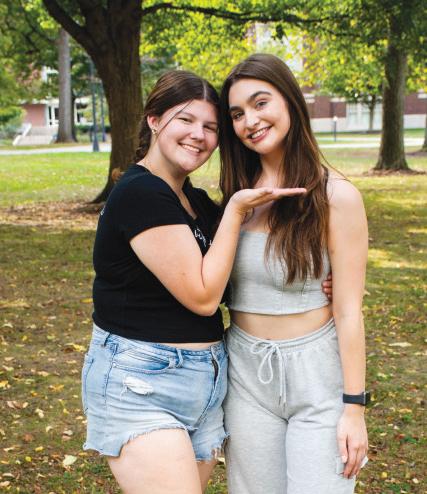
JaydenVaughnandLibertyRisterposeforaphoto intheircapandgownsMay24,2023atF.J.Reitz HighSchool.MEIAWALKER,PHOTOPROVIDED




LibertyRisterandJayden Vaughnposetorecreate Sept.aphotofromtheirpast Gymnasium.29outsideoftheBall KADINBRIGHT,DN















Jayden Vaughn is a third-year journalism major and writes “The Community Chronicle” for the Daily News. Her views do not necessarily reflect those of the newspaper.


me maintain my sense of self-identity.
something I can change.
The friends I have gained in college have mostly experienced my life through the stories I have told them. They didn’t witness who I was growing up. They have only been here for a chapter of my life, not the whole story. My friends from back home, however, have been here for the entire story.
didn’t. In reality, every time that I thought she was glaring at me, it was just because she couldn’t see and was squinting to get a better look at her surroundings.
The two of us came to Ball State together after graduating high school in 2023.


When I first came to college, I thought it would be my chance to reinvent myself. In a way, it has been. During my three years here at Ball State University, I have grown in multiple ways.
If someone had told me during my first year of college that I would be where I am today, I would have thought that they were insane. I wouldn’t have believed that I would be in my first-ever relationship, be a Dean’s List student or be an editor for the campus paper.
The people I have had the privilege of meeting in college will never understand just how much effort it has taken me to reach this point in my life. They see the version of me that I’ve worked on for the last three years. They see the persona that I put on the minute I crawl out of bed in the mornings. The edited version of myself. The medicated version of myself. Make no mistake, I love that current version of myself.
But no matter how much I have transformed myself during college, I will always be my true, authentic self from before the changes.
The people I have met at college don’t know anything about the way I wore my makeup every day in middle school or the way I wore my hair in a ridiculous ponytail every day for four years. They will never be the people whom I went with to my junior and senior proms, and they’ll never be the people who have watched my brothers grow up alongside me.

I value the friends I have made at Ball State, but ultimately, they didn’t grow up with me. That’s not





My childhood friends are the ones who have seen every facet of my life and stuck by me regardless. They have been by my side through every argument, every rant and every milestone, even when I didn’t deserve them. Even when people said our friendships would likely not survive beyond high school.
To this day, I know that they will be the people to help me pick out a dress for my wedding one day. They are girls that my children will call “aunt” in the future, and they will always be the women I consider sisters, even if we don’t share the same blood.
I cherish the friends I have gained in college, but my childhood friends know me authentically. They know every quirk, flaw and imperfection, and they never fail to make me feel like my authentic self.
Ultimately, staying friends with the people from my childhood helps me maintain my sense of self-identity. They keep me tied to my roots.
I met one of them in fourth grade when she came up behind me, scared me half to death and insisted that I was her new best friend. I didn’t even know her name. She was the new kid, and I was too shy to respond at the time. After that day, she would always come up and talk to me during class, and I got better at finding my responses. Looking back now, I would never change it for a thing.







My other best friend, I met in fifth grade during orchestra. However, we didn’t become close until middle school. For the longest time, I was under the impression that she hated me — she
Rebecca Schwartz-Mette, an associate professor of clinical psychology and director of the Peer Relations Lab at the University of Maine, stated in a 2023 article by the American Psychological Association, “For example, selfdisclosure between friends — sharing thoughts and feelings —helps young adults build empathy for others, practice seeking and providing social support, and even solidify their identities.”
That same article stated, “Scientists studying friendship have even found similar brain activity among friends in regions responsible for a range of functions, including motivation, reward, identity, and sensory processing.”
I’m fortunate to have found my close circle of friends early in life. The girls with whom I had sleepovers, cried with and shared key milestones.
Had I not met them when I did, I doubt that I would be who I am today.
According to a 2022 article by the Society for Research in Child Development (SRCD), “Forming and maintaining friendships is one of the most important developmental tasks in adolescence.
Supportive and high-quality friendships have been related to positive developmental outcomes and mental health, both concurrently and in the long term.”
Although I cannot vouch for having an entirely positive outcome with my mental health, I can guarantee that had I not had my friends with me while growing up, my mental health would be significantly worse. There have been times — specifically after I had leg surgery and was out of school for a couple of months — when my friends were the only people who could cheer me up.
These people have always been the ones to listen to me whenever I am feeling anxious. They’ve listened to more of my overthinking than anyone else and have always known how to work around my anxiety-fueled spirals, disarming my mental health low points through genuine care.




Furthermore, the same article goes on to state that although early childhood friends provide fun and companionship, adolescent friendships tend to fulfill other needs, such as trust, intimacy, attachment and emotional support. I’ve grown up with my friends. I’ve learned all about myself with them by my side, and I cannot remember my life without them.





Through them, I have learned how to keep long-lasting relationships, something vital to my life and personality. For me, if I want to keep someone in my life, I am in it for the long haul.


Temporary is not my thing. Whether it be with friendships or relationships, I want the real deal. I think that my childhood friends have prepared me for that, especially since I am someone who doesn’t easily form close relationships with people.
With these people, I never have to put on a mask. I am never more comfortable being me than when I am with them. No matter how much I have changed during my time in college, the memories, support and unconditional acceptance I have received from my small group of childhood friends have always helped me to remember who I am at my core.
These are the people whom I want to be around till the end of my story, not just a few chapters. If you’re lucky enough to have childhood friends like mine, cherish them. And if you are as fortunate as I am, then they might just stick by your side for a lifetime.







Contact Jayden Vaughn via email at jayden.vaughn@bsu.edu.











Continued from Page 03
Bridge Ball State is a unique political discourse group at Ball State because they are adamantly nonpartisan. Groups like the College Republicans or College Democrats cover the same topics that Bridge covers, but only one side of the conversation is represented in the discussion.
Both the College Republicans and College Democrats are only seeking members who align themselves with that political party, which isn’t to say that their meetings are not open to anyone.
Bridge Ball State specifically seeks out voices on either side of the spectrum and facilitates the discussion through a moderator. Bridge Ball State’s focus is on the quality of the discussion, while other groups are more concerned with the topics.
BridgeUSA’s national organization was established in 2016 and is a rapidly expanding, nonpartisan, nonprofit organization that has established 80 chapters in 40 states across the country.
According to their website, the organization’s mission is to “improve the quality of politics” through the engagement of “respectful, productive dialogue.”
This process of moderation is one established by the countrywide organization of BridgeUSA.
Adam Calder, BridgeUSA’s National Marketing Manager, outlined the “Four Norms of Discussion,” which are “listen to listen, no interruptions or side conversations, address the statement, not the person and participants represent only themselves and not the groups they belong to.”
“At the end of the day, we’re not trying to change minds. We’re not trying to win the debate, and we’re certainly not trying to destroy the other side. With us, it’s about understanding the other side,” Calder said.
He believes that the use of social media and its habit of rewarding “bombastic” behavior is why people’s ability to talk is declining.
“Social media platforms don’t necessarily incentivise productive, respectful disagreement,” said Calder. “It incentivises the anger and the volume.”
Political organizations are not exactly an emaciated category of club on Ball State’s campus. Currently, there are 13 organizations registered as “Political Action and Civic Engagement” groups at Ball State. Students have the option to join clubs from either side of the political spectrum, such as the Ball State College Republicans or College Democrats.
Ball State also offers many political action groups, such as Feminists for Action or the Young Democratic Socialists of America.
Despite the abundance of groups to choose from, students still struggle to align themselves with a specific political affiliation.
According to the national branch of Bridge USA, this is due to the lack of thoughtful, composite discourse. When speaking to Ball State secondyear history major Samuel Welch, he explained how his lack of political affiliation stemmed from this level of political polarization.
“I’m not sure I could throw my weight into any one side and stand with these people precisely as they are,” Welch said. “I feel like an individual.”
Welch said he feels as though he has a community to discuss current topics with. Samuel also mentioned he feels as though he is “well
We are building skills to talk across distances. This club is intended for anyone who wants to come. We encourage people from all kinds of backgrounds to come and make their voices heard.”
adjusted” to speaking about current events to people in his circle, regardless of his lack of political affiliation or knowledge of a public forum for discussion.
To Welch, the difficulty arises from the hostility people feel towards their opposing sides.
Bridge at Ball State is intended to be a space where people set aside their polarizations and find a way to communicate respectfully across their differences. Their core tenets are designed to focus the conversation on the message being shared, rather than on the person sharing it.
Through thoughtful moderation, an honest and fair discussion is facilitated, allowing people to hear each other out. Bridge at Ball State is finding a method to open up the dialogue and explore the connections that people have, despite their differences.
If readers are interested in this organization, they can visit its Instagram @bridgeballstate
Contact Ryan Fleek via email at ryan.fleek@ bsu.edu.
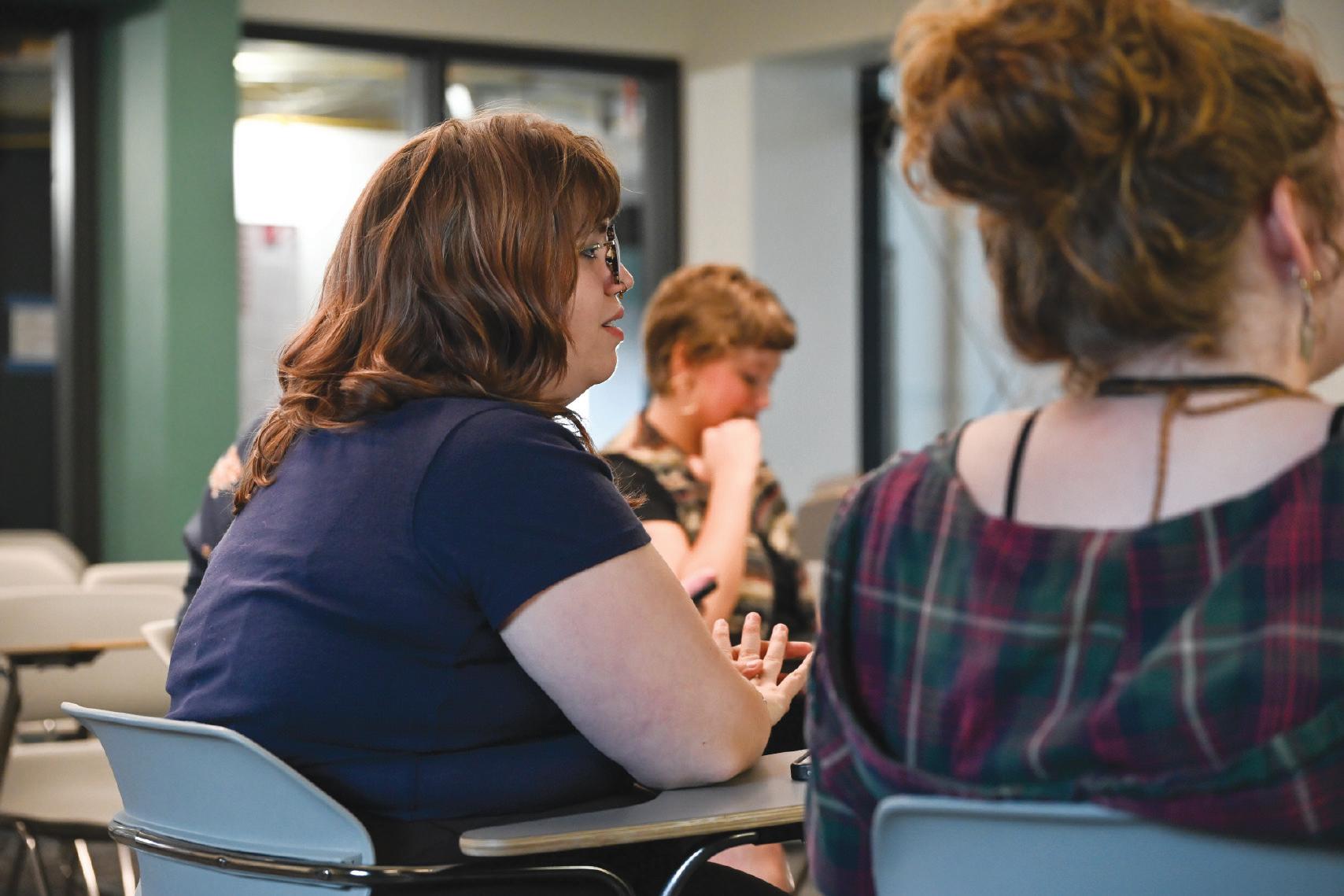
Participants are expected to be affiliated with the Democratic Party
Protest, rallies, political gatherings
Participants are expected to be affiliated with the Republican Party
Protest, rallies, political gatherings
Target base are of any poltical affiliation
Dialogue particpation development events


